




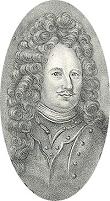



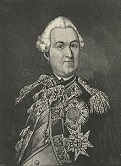









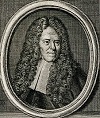


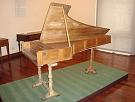

1700 Jan. 1, 1700 falls on Friday, so this is a Venus (Frigg) Century - yah right, they do a lot of frigging? Pop.: England-Scotland: 7.5M (8.5M in 1760), France: 19M (25M in 1789), Hapsburg dominions: 7.5M, Spain: 6M, India: 150M (up 50M in 2 cents.); Anglo pop. of the English colonies in America: 250K, with Boston (7K) the largest city, followed by New York City (5K); the ratio of the pop. in England to the pop. of the English colonies is 20 to 1; native Am. Indian pop.: 1M; pop. of Stockholm: 60K; well-fed Americans are the tallest people in the world from colonial times until the middle of the 20th cent. Muslim control of Turkey has grown from 0% in 1300 to over 50%, reaching 80% in 1900, and 99% by 2000. This year England imports 17M+ kg of tobacco, enough for everybody to smoke a pipeful a day. Early in this cent. the term "redcoat" is coined for a British soldier, whose coat is colored with madder red, with scarlet for oficers, expanding to all ranks in 1873; the Parliamentarian New Model Army of 1645 wrote coats of Venetian red. In this cent. the Industrial Rev. begins in Europe, starting slow and picking up steam about 1760; at the beginning of the cent. living conditions in Europe stink, with corpses piled into empty graves until full. In this cent. the open-field system in Britain along with communal mgt. of large tracts of farmland begins to be ended by enclosures by Parliament, with over 300K acres enclosed by 1760, and 3M more by 1801, allowing modern farming techniques to be used to increase output, causing the urban pop. to zoom from 20% to as much as 50% by 1770. In this cent. the Grand Tour flourishes for the British aristocracy, until the Napoleonic Wars make it too dangerous. On Jan. 26 a megathrust earthquake occurs in the Pacific Ocean. On Feb. 22 after Russia, Poland, and Denmark-Norway decide to take on the supremacy of the Swedish Empire in C, N, and E Europe, Augustus II the Strong of Poland invades Livonia (modern-day Estonia and Latvia) with his Saxon troops, starting the Great Northern War (ends Sept. 10, 1721), and sieges Riga (until Nov.), but is defeated by an army led by Swedish Wittelsbach king #4 (1697-1718) Karl (Charles) (Carolus Rex) XII (1682-1718); in July the Battle of Jungfernhof (Jumprava, Jumpravmuiza) near Riga is a V for field marshal (since Aug. 27, 1699) Count (since 1699) Adam Heinrich von Steinau (-1712), (who commanded imperial troops in Hungary against the Turks in 1695-6) over Swedish gen. (later count in 1706) Otto Ottoson Vellingk (1649-1708). On Mar. 1 in Denmark, Norway, and the Protestant states of Germany, Switzerland, and the Netherlands, the date switches from Feb. 18 as the 1582 Gregorian Calendar is finally adopted. On Mar. 25 (Mar. 13 Old Style) the Treaty of London (Second Treaty of Partition) (first in 1698) between France, Britain, and the Dutch Repub. revamps the Spanish succession, giving Spain and the Indies to Archduke Charles (later HRE Charles VI) (2nd son of HRE Leopold I), Naples, Sicily, and the Duchy of Lorraine to the French dauphin, and Milan to the duke of Lorraine, with the two branches of the House of Hapsburg stipulated to forever remain separate; Charles II of Spain signs a new will making Louis XIV's grandson Philip V, duke of Anjou his heir. On Mar. 19 Friedrich I approves the establishment of the Berlin Academy of Sciences, headed by big brain Gottfried Wilhelm von Leibniz. On Apr. 18 after being caught plotting with France to fight the Hapsburgs for Hungarian independence, Transylvanian prince (leader of the Kurucs) Francis II Rakoczy (1676-1735) is arrested and imprisoned in Wiener Neustadt fortress, but flees to Poland and plots to make a comeback. In June Mass. passes a law expelling all Roman Catholic priests; N.Y. follows suit. Nords 1, Slavs 0? On May 30-July 18 the new 40-ship Azov fleet of Russian tsar (since 1682) Peter I the Great (1672-1725) takes Azov from the Turks, followed by Kouban, ending the Second Russo-Turkish War (begun 1686); after Charles (Karl) XII of Sweden occupies Iceland, Peter I the Great begins a 21-year war with Sweden, but proves no match, as on Nov. 30 Charles XII uses a snowstorm as cover to defeat his 37K-man army under field marshal Charles Eugene de Croy (1651-1702) with only 12.3K troops at the Battle of Narva, with 10K-16K Russians KIA and 17K-30K captured vs. 667 Swedes KIA and 1.2K wounded, uniting Sweden and beginning Nordic settlement of the New World; the weakness of the Asiatic hordes against the N European Nordics is exposed, and Sweden becomes the leading power in N Europe; too bad, in Sept. Russia makes Courland a vassal, and after Russia declares war on Poland in 1702, Sweden wastes several years campaigning in Poland, giving Peter the great, er, the Great the opportunity to reorganize his army and construct a Baltic fleet. On July 10 the first advertisement is placed for Hockley-in-the-Hole in London, England, which stages prize fights, incl. with swords, and also has a lovely Bear Garden for bull and bear baiting; in 1774 the name is changed to Ray St. England is set to be ruled by Germans and nobody can stop it? On July 30 Prince Anne's popular son and heir apparent Duke William of Gloucester (b. 1689) dies of smallpox, and succession to the English throne passes through James VI's daughter Elizabeth to Electress Sophia of Hanover (1630-1714), mother of Elector Prince George (later George I); morbidly obese Princess Anne has by now had 18 pregnancies, of which only five ended in live births, and they all died, some incl. Lady Mary and Lady Anne of smallpox, and by now she is worn-out and a semi-invalid. On Aug. 3 the French ship Amphitrie returns to China with a cargo of silk, porcelain, and tea, causing a boom that increases ships to China 10x. On Sept. 6 the town of Mount Kisco, N.Y. on the Kisco River in modern-day Westchester County (Munsee "asiskuw" = mud") (modern-day pop. 10.8K) is first mentioned, becoming the home of New York Times pub. Arthur Ochs Sulzberger Jr., Walt Disney CEO Michael Eisner, TV personalities Bennett Cerf and Arlene Francis, and composer Samuel Barber. On Sept. 27 Pope (since July 12, 1691) Innocent XII (b. 1615) dies after advising retarded king Charles II of Spain to make his grandnephew (Louis XIV's blonde 2nd-eldest grandson) (great-grandson of Philip IV of Spain) Philip (Felipe) V, Duke of Anjou (1683-1746) his testamentary successor, and on Nov. 1 Charles II (b. 1661) dies childless, ending the line of the Spanish Hapsburgs, and Louis XIV of France accepts the Spanish throne for Philip V, founding the Spanish House of Bourbon, but the Austrians want Spain to remain Hapsburg to keep Louis XIV from getting too much power, and back Hapsburg Archduke Charles (later HRE Charles VI), which leads on May 15, 1702 to the 12-year War of the Spanish Succession (ends Sept. 7, 1714). On Nov. 23 Giovanni (Gian) Francesco Albani (from a noble family in Urbino that orginally came from N Albania) is elected Pope (#243) Clement XI (1649-1721), going on to commission the 5K-page 8-vol. Illyricum Sacrum in 1702 (pub. in Venice in 1751-1819), and refrain from nepotism, other than his nephew Annibale Albani (1682-1751), who is elected cardinal, but on his own merits; the new pope starts out by trying to remain neutral in the succession dispute, while the Austrians invade Italy and take Milan, and the HRE forms a coalition with England, Holland, and Prussia against France and Savoy; Duke Victor Amadeus II of Savoy is placed in command of the combined French-Spanish armies, while his cousin Prince Eugene of Savoy commands the opposing armies. On Dec. 9 moderate Tory Sidney Godolphin, 1st Earl of Godolphin (1645-1712) becomes head minister of the British cabinet (don't say prime minister, actually first lord of the treasury) (until Dec. 30, 1701). Sir Robert Walpole (b. 1676), heir to a rich Norfolk estate is elected to Parliament for Castle Rising, and is reelected next year for King's Lynn. The elective office (since 1516) of prince-bishop of Montenegro becomes hereditary, from uncle to nephew, starting with Danilo I Petrovic-Njegos (1670-1735), founder of the Petrovic-Njegos Dynasty, going on to cultivate friendly relations with Russia. Capt. Kidd goes to Boston to prove his innocence of piracy, is arrested along with several of his crew, and sent to London, where they are imprisoned on Newgate on three counts of piracy, plus murder of a crew member during the Madagascar mutiny. In this cent. the Kingdom of Chikulamayembe is founded in Malawi (ends in the 1870s). With financing by German-born Jewish banker ("the Judenkaiser") Samuel Oppenheimer (1630-1703), Judah the Pious (Judah he-Hasid Segal ha-Levi) (1600-1700) settles in Jerusalem with 1K Ashkenazi followers, joining 200 Ashkenazi and 1K Sephardic Jews already there, resulting in the Ashkenazi building a synagogue on credit and getting it taken back in 1720 by the Arab creditors, who set it on fire, after which the Turks decided to ban all Ashkenazis, causing most to move to other cities, while some pretended to be Sephardics; in 1864 the Ashkenazi Hurvat Yehudah he-Hasid (Destroyed Place of Judah the Pious) is rebuilt, then destroyed in 1948 by the Arab Legion. Sing Sing on the Hudson River 30 mi. N of New York City, named after the Sin Sincks Indians is settled on the Philipse Manor; the name is changed to Ossining in 1901 in a vain attempt to separate it from Sing Sing Prison. By this time the Dutch have overtaken the Portuguese as masters of the world sea trade. About this time Rococo (Roccoco) (Late Baroque) Architecture (Fr. "rocaille" + "coquilles" = stone + shell) (It. "barocco" + Fr. "rocaille" = imperfect pearl + interior decoration using shells and pebbles) arises in Roman Catholic S Germany, Bohemia, and Austria, reacting to the strict rules of Baroque Architecture with a jocular, florid, graceful approach, with asymmetrical ornate designs with light colors, curves, and gold, and playful-witty themes, reaching its height in 1730s France, esp. during the reign (Sept. 1, 1715-May 10, 1774) of Louis XV (1710-74); by the late 1700s it is replaced by the Neoclassical style. In this cent. the Muslim Arab Slave Trade in E Africa sees 500-1K slaves taken at a time from villages in E Africa, held in Zanzibar in the Shimoni Caves for up to three weeks, then shipped to Yemen and America; it continues until the 19th cent.; the port city of Bordeaux, France becomes a major player in the Trianglular Trade of slave ships trading weapons, cloth, and trinkets for African slaves, who are then shipped to the Indies and traded for sugar, coffee, chocolate, and cotton, creating wealthy families who plow their money into wine estates, making Bordeaux wine #1, with names like Mouton, Lafite and Margaux; in 1700-1800 500+ slave ships sail from Bordeaux; meanwhile in the still lily-white Va. Colony racial attitudes harden to the point that all blacks are considered slaves, and manumission requires them to leave so they don't have to deal with a mixed society; meanwhile the white elite fosters racism to keep the downtrodden white lower classes from uniting with the blacks against them and instead prefer racial solidarity, leading to the tragic Pickett's Charge for Ole Virginny in 1863?; in this decade Lagos, Nigeria becomes a major center of the African slave trade (until 1851), ruled by the Yoruba Oba kings. Between this year and 1850 more than 70% of the 12M total slave exports across the Atlantic occur, with a mortality rate of 25% (9.5M surviving). Between this year and 1810 ships bring nearly 1M African slaves to work in sugar planations in Jamaica and Barbados; British sugar consumption grows from 4 lbs. per capita in 1700, 18 in 1800, 36 in 1850, to 100+ by 1900. About this time the commode becomes a popular household appliance. Early in this cent. April Fools' Day migrates from France to England. In this cent. the phrase "o'clock" begins to be used instead of "of the clock" or "a clock". Berlin institutes a tax on unmarried women - the original play or pay? Britain prohibits the printing or weaving of calico, regulates vending of alcoholic spirits, and finally allows commoners to own greyhounds. In this decade many German towns become lit by oil. At the beginning of the cent. British industry is limited to the "domestic system" (cottage industry), mainly woolworking; the Norwich region, centered around the town of Worstead becomes famous for "worsted" woolens. The demise of Puritanism allows Christmas carols to become popular again in this cent. Early in this cent. the word "barbarian" comes to mean somebody who is wild or rude. In this decade Congregational minister (since 1680 John Wise (1652-1725) of Ipswich, Mass. successfully campaigns against a plan by Increase Mather and Cotton Mather to organize Mass. clergymen into associations, claiming that it would reduce local church autonomy. Early in this cent. the Established Church of Scotland is so concerned with the spread of Bourignianism, a belief in direct mystical supernatural revelation originated by Flemish nun Antoinette Bourignon (1616-80) and spread by Calvinist minister Pierre Poiret (1646-1719) that it requires entrants to the ministry to solemnly renounce it. By this year there are 50-60 regular newspapers in Germany reaching several hundred thousand readers. New York Province gov. #12 (1698-1701) Richard Coote, 1st Earl of Bellomont (1636-1701) establishes a reading room that in 1754 becomes the New York Society Library. The Academie des Sciences et Belles Lettres is founded in Lyon, followed by an Academie des Beaux-Arts in 1713. The Late Baroque Period of European Art begins (ends 1715), characterized by freedom of form, motion, and feeling along with ornamentation such as only absolute monarchs can love? About this time the Mdewakantonwan (pr. bde-wak-hath-ung-wang) subtribe of the Dakota nation moves into the area around Lake Minnetonka in Minn. W of modern-day Minneapolis-St. Paul. Early in this cent. Opera Buffa (comic opera) arises in Naples, and spreads N. The P'ansori (1-man opera) is developed in Korea in this cent., but doesn't flourish until the 19th cent., taking librettos from vernacular Korean novels. About this time the rules and vocabulary of Danse d'Ecole (Ballet) are codified in France. In the first half of this cent. European secular painting hits rock bottom because of all the religious pressure. In this cent. Santo religious icon art is developed by Am. Catholic Hispanics in Colo. and New Mexico. Sports: Francisco Romero of Andalusia becomes the first famous Spanish bullfighter. Architecture: The Palace of Forty Pillars in Isfahan, Persia is redesigned. Eddystone Lighthouse (begun 1698) off Plymouth, England is finished. The Isaac Winslow House in Marshfield, Mass. is built. The domed mansion Castle Howard near Malton, Yorkshire, England is built, featuring fine art collections open to the public. Rich English lawyer John Kyrle (1637-1724), who turns philanthropist and lives a frugal lifestyle so he can use his wealth for the community founds The Prospect in Ross-on-Wye, a hilltop park with a fountain and walkways. Inventions: In this cent. Cordials (Lat. "cor" = heart) AKA surfeit waters, used for medicinal purposes begin to incl. alcohol, spawning griottes, long-stalked sour griotte cherries in kirsch wrapped in chocolate, invented in Franche-Comte, which travel to the U.S., evolving into chocolate-covered cherry cordials, which become popular for Valentines Day gifts. The pianoforte (piano) is invented by Italian harpsichord maker Bartolommeo Cristofori (1655-1731) of Padua, who in 1709 makes four "gravicembali col piano e forte" (harpsichord with soft and loud) for Tuscan grand prince Ferdinando de' Medici; family friend Sebastian LeBlanc suggests black and white keys. In this half-cent. the Serinette (Fr. "serin" = canary) hand-cranked barrel organ appears in E France to teach songs to canaries, evolving into the organ-grinder profession. By this time the Four-Masted Galleon is being produced in Europe. Side arms for eyeglasses are developed in this cent. The modern spoon with the spatulate handle is invented in this cent. A Swiss inventor mounts a windmill on a wagon, using it to wind up a huge spring. Science: English mathematician John Machin (1686-1751) (prof. of astronomy at Gresham College, London) invents a convergent series for pi based on the series expansion of the arctangent function, and uses it to compute pi to 100 decimal places - well snaggle my fran? About this time Sir Isaac Newton predicts the deflection of light around the Sun by 0.875 arc sec.; Albert Einstein later plagiarizes him for his 1913 prediction, which isn't experimentally verified because of WWI, but changes his prediction to 1.75 arc sec. before an expedition to a solar eclipse measures it in 1919?; Newton claimed that the gravitational attraction of the Sun makes light travel faster close to it so that the deflected light arrives before the undeflected light, whereas Einstein claimed that light will be delayed when passing close to the Sun. Dutch botanist-anatomist Frederik Ruysch (1638-1731) describes the ocular circulatory system, proving the existence of the arteria centralis oculi (central artery of the eye); he goes on to prove the existence of valves in the lymphatic system, along with the vomeronasal organ in snakes, and invents the art of injection and embalming techniques, becoming the first to embalm by injecting a chemical solution into the blood vessels made of clotted pig's blood, Berlin blue, and mercury oxide, creating dioramas incorporating human parts esp. infant and fetal bodies, leaving 2K+ preserved specimens in his private museum, also preserved butterflies and lizards, selling a load of it in 1717 to Peter the Great. Joseph Sauveur begins writing on musical acoustics. French botanist Joseph Pitton de Tournefort (1656-1708) discovers ammonium chloride. Nonfiction: Mary Astell (1666-1731), Some Reflections Upon Marriage (London); "If all men are born free, how is it that all women are born slaves?" Guillaume Delisle (1675-1726), The Map of the World; The Map of the Continents; unsurpassed accuracy, making him a star in France. Johannes Andreas Eisenmenger (1654-1704), Entdecktes Judenthum (Judaism Unmasked) (2 vols.) (Frankfurt); cites 193 Jewish books and rabbinical tracts with extensive and accurate erudition to expose the Jewish religion as barbarous, superstitious, and promotious, er, promoting murder of non-Jews, recommending that they lose their "freedom in trade" that is threatening to make them "lords" over the Germans, and that synagogues, public worship, and rabbis be banned, claiming that the Germans descended from the Canaanites, whom the Jews were commanded by Jehovah to destroy in Deut. 7:16., causing Jewish banker Samuel Oppenheimer to pay big bucks to get his patron Hapsburg HRE Leopold I to ban the book, helped by the Jesuits, who claim it slanders Roman Catholicism, which only makes it more popular, becoming a sourcebook for all future anti-Talmudic lit.; Eisenmenger dies of grief? Raoul Anger Feuillet (1653-1709), Choregraphie, ou l'Art de D'Ecrire la Danse; describes the Beauchamp-Feuillet Notation. Thomas Hyde (16361-1703), Historia Religionis Veterum Persarum; first attempt to correct ancient Greek and Roman historians on Zoroaster and Zoroastrianism; coins the term "dualism". Bernardino Ramazzini (1633-1714), De Mortis Artificum Diatriba; first comprehensive work on occupational diseases, covering 52 occupations, even the overtaxed minds of scholars; recommends that Hippocrates' list of questions for patients be extended with "What is your occupation?"; rev. ed. pub. in 1713. Samuel Sewall (1652-1730), The Selling of Joseph; the first Am. polemic against slavery? James Thornhill (1675-1734), Portrait of Sir Isaac Newton as an Old Fart (1709-12). Music: Jeremiah Clarke (1674-1707), Prince of Denmark's March (Trumpet Voluntary); mistakenly attributed to Henry Purcell until the 1940s. William Croft (1678-1727), Incidental Music to "Courtship a la Mode". Reinhard Keiser (1674-1739), La Forza della Virtu oder Die Macht der Tugend (opera) (Hamburg). Art: Charles-Antoine Coysevox (1640-1720), Mercury (statue) (1700-2). Luca Giordano (1634-1705), The Massacre of the Innocents. Sir Godfrey Kneller (1646-1723), Portrait of Matthew Prior. Francesco Trevisani (1656-1746), The Massacre of the Innocents (1700-10). Plays: Susanna Centlivre (1667-1723), The Perjured Husband; or, The Adventures of Venice (tragedy) (first play) (Theatre Royal, Drury Lane, London); the prologue boasts that the author is a woman, and it becomes a hit. William Congreve (1670-1729), The Way of the World (comedy) (Lincoln's Inn Fields, London) (Mar.); lovers Mirabell (John Verbruggen) and Millamant (Anne Bracegirdle) can't marry until they get past her aunt Lady Wishfort, who hates him and wants her nephew Sir Wilfull to marry her instead; a flop, causing him to go into retirement, but is later considered his masterpiece; he really quits after writing only five plays after Jeremy_Collier pub. A Short View of the Immorality and Profaneness of the English Stage in Mar. 1698, ruining his market and scaring him off? George Farquhar (1677-1707), The Constant Couple, or A Trip to the Jubilee (comedy) (Drury Lane, London); stars Robert Wilks as Sir Henry Wildair; a big hit; followed by "Sir Harry Wildair" (1701). Nicholas Rowe (1674-1715), Tamerlane; Tamerlane is really William III, and Bajazet is really Louis XIV; performed for many years on the anniv. of William III's Nov. 5, 1688 landing in Torbay; provokes a riot in Dublin in 1712. Births: German writer-critic Johann Christoph Gottsched (d. 1766) on Feb. 2 in Juditten (near Konigsberg), Brandenburg-Prussia; Lutheran clergyman father; educated at the U. of Konigsberg. Swiss Bernoulli's Principle mathematician-physicist (hydrodynamics founder) Daniel Bernoulli (d. 1782) on Feb. 8 in Groningen, Netherlands; son of Jean (Johann) Bernoulli (1667-1748); nephew of Jacob Bernoulli (1655-1705); brother of Nicolaus II Bernoulli (1695-1726) and Jean (Johann) II Bernoulli (1710-90) educated at the U. of Basel, U. of Heidelberg, and U. of Strasbourg; friend of Leonhard Euler; "by far the ablest of the younger Bernoullis" (W.W. Rouse Ball). Italian architect-engineer Luigi Vanvitelli (Lodewijk van Witel) on May 12 in Naples; Dutch father Caspar van Wittel (1652-1736), Italian mother. German Moravian (Herrnhuter) leader Count Nikolaus Ludwig von Zinzendorf und Pottendorf (d. 1760) on May 26 in Dresden, Saxony; raised by a Pietist grandmother; educated at the U. of Wittenberg. German jurist-physicist and Lutheran cleric Ewald Georg von Kleist (d. 1748) on June 10. French-Canadian explorer Francois-Marie Bissot, Sieur de Vincennes (d. 1736) on June 17 in Montreal, Canada; son of Jean Baptist Bissot (1668-1719). Polish-Saxon statesman Count Heinrich von Bruhl (Brühl) (d. 1763) on Aug. 13 in Gangloffsommern; paternal grandfather of Marie von Bruhl (1779-1836). Scottish "The Seasons", "Rule, Britannia" poet-dramatist James Thomson (d. 1748) on Sept. 11 in Ednam, Roxburghshire; educated at Edinburgh U. French Baroque-Rococo sculptor Lambert-Sigisbert Adam the Elder (l'Aine) (d. 1759) on Oct. 10 in Nancy; eldest son of Jacob-Sigisbert Adam; brother of Nicolas-Sebastian Adam the Younger (le Jeune) (1705-78), Francois Gaspard Balthazar Adam (1710-61), and Anne Adam, who becomes the mother of sculptor Claude Michel AKA Clodion, who apprentices in his studio. Russian statesman and Seven Years' War gen. Count Pyotr Semyonovich Saltykov (d. 1772) (b. 1697-8?) on Dec. 11 in Saltykovo; son of Semyon Saltykov; sent by Peter I the Great to France to study naviation in 1714, staying there 20 years. French physicist Jean-Antoine Nollet (d. 1770) on Nov. 19 in Pimpre, Oise. German Prussian gen. Leopold II Maximilian, Prince of Anhalt-Dessau (d. 1751) on Dec. 25 in Dessau; 2nd son of Leopold I (1676-1747) and Anna Louise Fose. Italian organist-composer Giovanni Battista Sammartini (d. 1755) in Milan; teacher fof Christoph Willibald Gluck (1714-87). Italian Late Baroque Winter Palace architect (in Russia) Francesco Bartolomeo Rastrelli (d. 1771) in Paris, France; son of Carlo Bartolomeo Rastrelli (1654-1744). Italian Oceanus in the Trevi Fountain sculptor Pietro Bracci (d. 1773) in Rome. English librettist (for Handel) Charles Jennens (d. 1773) in Leicestershire; educated at Balliol College, Oxford U.; turns Handel onto Biblical themes for his oratorios. Deaths: French landscape architect Andre Le Notre (b. 1613) on Sept. 15. Indian saint Bahinabai (b. 1628) in Sirur, Maharashtra: "A woman's body is a body controlled by somebody else. Therefore the path of renunciation is not open to her." English poet laureate and Puritan-turned-Catholic John Dryden (b. 1631) on May 12 (May 1 Old Style); buried at Chaucer's side in Poet's Corner in Westminster Abbey; an elegiac poetry collection titled The Nine Muses; Or, Poems Written by Nine Severall Ladies is left on his grave, with contributors incl. Susanna Centlivre. Am. New York City mayor Stephanus van Cortlandt (b. 1643) on Nov. 25. French actress Armande Bejart (b. 1645). Canadian explorer Louis Jolliet (b. 1645) on May 22. Vietnamese gen. Nguyen Huu Canh (b. 1650) in Rach Gam, My Tho. Italian pope (1691-71) Innocent XII (b. 1652) on Sept. 27 in Rome. Spanish king Charles II (b. 1661) on Nov. 1 in Madrid; last Hapsburg king of Spain and perennial trivia question. English royal heir Duke William of Gloucester (b. 1689) on July 30 (smallpox).





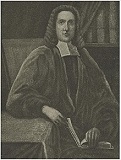
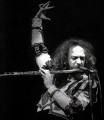



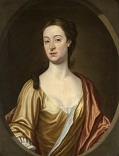

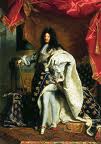
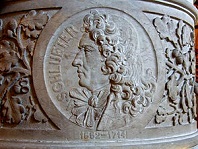

1701 On Jan. 18 Elector Frederick III of Brandenburg-Prussia, son of Frederick William the Great Elector crowns himself king Frederick (Friedrich) I (1657-1713) of Prussia after HRE Leopold I okays it, and proclaims the kingdom of Prussia, with Brandenburg as a province (until 1946), and now Prussia is on the fast track to power in Spain-is-yesterday's-news brand-spanking-new 18th cent. Europe; the Hohenzollerns control Prussia until 1918. In Feb. HMS Roebuck captained by William Dampier sinks in Clarence Bay on Ascension Island, and he and his 60 men survive 2 mo. until being rescued, returning to England in Aug., where he is court-martialed for cruelty, beging convicted on one of three charges. On June 16 English Anglican abolitionist clergyman Thomas Bray (1656-1730) founds the Society for the Propagation of the Gospel in Foreign Parts (SPG) in London, England; with the charter issued by William III calling it "an organisation able to send priests and schoolteachers to America to help provide the Church's ministry to the colonists", with the goals of ministering to British people overseas and evangelization of non-Christians around the world; in 1965 it is renamed the United Society for the Propagation of the Gospel (USPC); on Aug. 25, 2016 it is renamed to the United Society Partners in the Gospel (USPG). On July 8 after their big V at Narva last year, 7K Swedes under Charles II push into the Polish-Lithuanian Commonwealth and win the Battle of the Crossing of the Daugava (Duna) (Düna) River (Battle of Riga) against a 10K-man Polish and 9K-man Saxon army under Saxon field marshal Adam Heinrich von Steinau, with 2K Polish-Saxon casualties vs. only 100-400 Swedish casualties, after which they get in an endgame (ends 1703). Detroit really is the original home of Cadillac? On July 24 French king Louis XIV gives permission for the settlement of Detroit (Fr. "le Detroit" = the Straits) (modern-day pop. 3.7M/5.3MM), originally Fort Pontchartrain du Detroit (Détroit) to ever-broke Gascony, France-born explorer and scoundrel Antoine Laumet de La Mothe, Sieur de Cadillac (1658-1730) on a peninsula joining Lake Huron and Lake Erie to control Illinois trade; the settlement is begun in July; Cadillac arrived from France at Point Royal in 1683, added "de La Mothe Cadillac" to his name after Cadillac in SW France,, and spent four years exploring the New World down to the Carolinas, getting a promotion to cmdr. of Fort de Buade (Michilimackinac) (near modern-day St. Ignace, Mich.) in 1694, exploring the Great Lakes in 1695 until he got into trouble for selling alcohol to the Indians and returned to Montreal in 1696, traveling back to France in 1697 to talk them into building Fort Pontchartrait on the straits; too bad, it burns down in 1703, and he returns to Quebec, getting charged with trafficking in alcohol and furs, taking until 1708 to clear his name, after which in 1710 he is appointed gov. of Louisiana, founding Mine La Motte in modern-day Madison County, Mo., the first lead mine in Missouri, worked by the first African slaves in Mo.; in 1716 he is fired, and returns to France in 1717, gaining an undeserved rep as a hero until the 1950s; Detroit is incorporated on Sept. 13, 1806. On Sept. 16 (Sept. 5 Old Style) deposed English/Scottish king (1685-88) James II (b. 1633) dies of syphilis while in exile in France at Versailles; his son James Francis Edward Stuart (James III) (the Old Pretender) (1688-1766) is proclaimed King James III of England and Scotland by the French and Spanish courts and the Jacobites, causing the English Parliament on June 12 to pass the Act of Settlement establishing its own supremacy, settling the crown on Princess of Sophia of Hanover (granddaughter of James I), and declaring that only an Anglican can inherit the throne, cannot leave the kingdom without Parliament's consent, and cannot involve the country in war for the defense of his foreign possessions; in Dec. a new English Parliament is elected, and next May 4 it votes to declare war against the Frogs to the max, authorizing an army of 40K men, just in time to support William III, who on Sept. 7 forms and heads the Second Grand Alliance of England, the Netherlands, and Austria against France and Spain, with the goal of securing the Spanish possessions in the Netherlands and Italy for the Austrian house; Prussia and many German states later join the Grand Alliance, while Portugal, Savoy, Mantua, Bavaria and Cologne ally with France and Spain; Prince Eugene of Savoy heads the armies of the Grand Alliance against the French alliance, headed by Duke Victor Amadeus II of Savoy, scoring Vs at the Battle of Carpi on July 9, and the Battle of Chiara - savoy vs. savoy, you savvy? On Oct. 9 Yale College (the Collegiate School of Connecticut) is chartered in Saybrook, Conn. by a group of 10 Congregational ministers, nine of them Harvard grads, who met the previous year in Killingworth (Clinton); in 1716 Yale Collegiate School moves to New Haven, Conn., teaching only theology and sacred languages; in 1861 it awards the first Ph.D. in the U.S., becoming a univ. in 1887. In Oct. Penn. adopts its Fourth Frame of Government, AKA the Charter of Privileges, written by William Penn (1644-1718), who grants Delaware (Del.) a charter giving it the right to choose its own assembly, while the gov. of Penn. continues to preside over it; late in the year Penn returns to England, leaving an agent named Ford to run things, who is so crooked that he eventually almost ruins him. Charles Howard, 3rd Earl of Carlisle (1669-1738) succeeds Sidney Godolphin as head minister of the British cabinet (first lord of the treasury) (until 1702). The Ashanti (Assante) Empire in Ghana (ends 1957) is founded by king (since 1675) Osei Kofi Tutu I (1660-1717), who sits on the Golden Stool, becoming known for early adoption of firearms and going on to expand to modern-day Ivory Coast, becoming a favorite with historians for its military prowess, wealth, culture, architecture et al. Chettha IV becomes king of Cambodia for the 2nd time (until 1702). Charles XII of Sweden invades Poland and takes Courland. Britain obtains a questionable deed to W North Am. lands from the Iroquois. Rama Varma dies, and Rama Varma (-1721) becomes king of Dutch-controlled Cochin in S India. Philadelphia, Penn. at the junction of the Delaware and Schuylkill Rivers (modern-day pop. 2M/5M) is first chartered as a city (rechartered in 1789). Weavers in Axminster and Wilton, England are given royal charters to make carpets. William Whiston resigns as vicar of Lowestoft (since 1698) to become fellow Trinity-denying Arian Isaac Newton's asst., and in 1703 succeeds him as Lucasian prof. of math. (until 1710). The Inquisition in S France forbids dowsing as a means of tracking down criminals and heretics. The U. of Venice in Italy is founded. Henry Playford (1657-1709) establishes a series of weekly concerts at Oxford. Architecture: The Amber Room (Yantarnaya Komnata) is designed by Hamburg-born German Baroque sculptor-architect Andreas Schlueter (Schlüter) (1660-1714) and Danish amber craftsman Gottfried Wolfram (finished in 1709); in 1706 it is given by Prussian King Frederick William I to Russian Tsar Peter I the Great; too bad, in WWII Nazi Army Group Nord steals it and takes it to Konigsberg, and it disappears; in 1979-2003 it is reconstructed in the Catherine Palace near St. Petersburg. The Royal (Collins) Barracks in Dublin, Ireland is built, becoming its first public bldg. other than the Royal Hospital at Kilmainham; in 1994 it becomes the Nat. Museum of Ireland. Inventions: English farmer Jethro Tull (1674-1741) invents the horse-drawn machine seed drill, which neatly sows seeds in rows (see China in -85). Nonfiction: Dimitrie Cantemir (1673-1723), The Image of the Sacred, Unpredictable Science (Istanbul). Samuel Clarke (1675-1729), A Paraphrase upon the Gospel of St. Matthew; follows by Mark and Luke in 1702, and John in 1703. Jeremy Collier (1650-1726), The Great Historical, Geographical, Genealogical, and Political Dictionary (2 vols.). Charles Davenant (1656-1714), Essays upon the Balance of Power; Essays upon the Right of Making War, Peace, and Alliances; Essays upon Universal Monarchy; "a highly partisan attack on William III's foreign policy"; A Discourse on Grants and Resumptions and Essays on the Balance of Power; The True Picture of a Modern Whig (Aug.); defends the Tories against the Whigs; Tom Double Returned Out of the Country; claims that the pesky Whigs want to start another war with France to bankrupt landowners. John Dennis (1657-1734), The Advancement and Reformation of Modern Poetry; his best work? Rene Descartes (1596-1650), Regulae ad Directionem Ingenii (1619-28) (posth.); explains his basic methods. William Fleetwood (1656-1723), An Essay on Miracles. Arai Hakusetki (1675-1725), Hankampu; history of the Daimyo of Japan. Edmond Halley (1656-1742), A General Chart of the Compass; magnetic compass variations based on his 1698-1700 Atlantic Ocean voyage. Gottfried Wilhelm von Leibniz (1646-1716), Essay on a New Science of Numbers; his 1679 discovery of binary numbers, sent to the Paris Academy to celebrate his induction. Sir Richard Steele (1672-1729), The Christian Hero (first work); preaches a high moral code that he fails to follow personally, drawing ridicule. Benjamin Whichcote (1609-83), Several Discourses: Moral and Religious Aphorisms (posth.). Father Francisco Ximenes (Sp. var. of Simon) (tr.), Popul Vah (Book of the Mat or Community Council) (1701-21); sacred book of the Quiche Indians of Guatemala. Music: Reinhard Keiser (1674-1739), Stortebeker und Jodge Michels (opera) (Hamburg). Art: Giuseppe Maria Crespi (1665-1747), The Ecstasy of St. Margaret. Sir Godfrey Kneller (1646-1723), William III on Horseback. Andrea Pozzo (1642-1709), St. Francis Xavier. Hyacinthe Rigaud (1659-1743), Portrait of Louis XIV; his biggest and best of many. Plays: George Farquhar (1677-1707), Sir Harry Wildair (comedy). Peter Anthony Motteux (1663-1718), Acis and Galatea; music by John Eccles. Sir Richard Steele (1672-1729), The Funeral, or Grief a la Mode (comedy) (first play) (Drury Lane, London); big hit, making him a celeb with the king and the Whigs. Poetry: Mary Chudleigh (1656-1710), The Ladies' Defense; Or, The Bride Woman's Counsellor Answer'd: A Poem in a Dialogue Between Sir John Bute, Sir William Loveall, Melissa, and a Parson (London); a response to the wedding sermon "The Bride-Woman's Counselor" by John Spring (1700), urging women to avoid marriage so that man can't keep them down, and develop themselves through education. Peter Anthony Motteux (1663-1718), A Poem in Praise of Tea. Novels: Peter Anthony Motteux (1663-1718) (tr.), Miguel Cervantes' Don Quixote (4 vols.); becomes popular even though it turns Don Quixote and Sancho Panza into buffoons and changes the mock-serious style into a frivolous one. Daniel Defoe (1659-1731), The True-born Englishman (satire). Births: French scientist Charles Marie de La Condamine ("cultivable land") (d. 1774) on Jan. 28 in Paris; educated at the College Louis-le-Grand. Swedish merchant-philanthropist Niclas (Nicolaus) Sahlgren (d. 1776) on Mar. 18 in Gothenburg. Canadian Roman Catholic nun (founder of the Grey Nuns) (St.) Marguerite d'Youville (Marie-Marguerite Dufrost de Lajemmerais) (d. 1771) on Oct. 15 in Varennes (near Montreal), Quebec; first native-born Canadian saint; canonized in 1990; feast day: Oct. 16. Italian Venetian Rococo genre painter Pietro Longhi (d. 1785) on Nov. 5 in Venice; apprentice of Giuseppe Maria Crespi - what a gay life the aristocracy has, let me show you? Swedish Celsius Scale astronomer Anders Celsius (d. 1744) on Nov. 27 in Uppsala; grandson of astronomer Magnus Celsius (1621-79). Chinese novelist Wu Jingzi (d. 1754). English Bayes Law mathematician and Presbyterian minister Thomas Bayes (d. 1761) in London; educated at the U. of Edinburgh. French gen. Ludwig August von Dieskau (Jean Erdman or Jean-Armand Dieskau, Baron de Dieskau) (d. 1767) in Saxony. Italian composer Giovanni Battista Sammartini (d. 1775). Deaths: French novelist Madeleine de Scudery (b. 1607) on June 2. English ex-king James II (b. 1633) on Sept. 5 in Versailles, France (syphilis) - I really like your look, you got the look I like? Am. "to hell with 'em all" Salem Witchcraft Trials judge Willaim Stoughton (b. 1631) on July 7 in London, England. British colonial gov. Richar Coote, 1st earl of Bellomont (b. 1636) on Mar. 5 in N.Y. Italian composer Pietro Sammartini (b. 1636). Austrian gen. Count Ernst Rudger von Starhemberg (b. 1638) on Jan. 4 in Vosendorf (near Modling). English dramatist-politician (House of Commons Speaker) Sir Charles Sedley (b. 1639) on Aug. 20. French duke Philippe of Orleans (b. 1640) on June 9 in Saint Cloud. Arrgh? English pirate Captain Kidd (b. 1645) on May 23 in London; hanged for murder and piracy at London's Execution Dock after his sponsor Richard Coote, 1st Earl of Bellomont deems him to have turned pirate and gets him arrested and returned to England; the executioner is so drunk that the rope breaks and he has to hang the drunken bum a 2nd time; his body is tarred and placed in an iron cage chained to a stake on the Thames River to gross-out seafarers for years; after a small amount of treasure is recovered from Gardiner's Island off Long Island, the legend of Capt. Kidd's buried treasure is born. English clergyman Henry Maundrell (b. 1665) in Aleppo, Syria; leaves Journey from Aleppo to Jerusalem at Easter A.D. 1697, which becomes a minor travel classic. French war sec. Louis Francois Marie le Tellier (b. 1668) on Jan. 5.
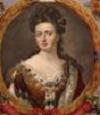

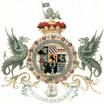


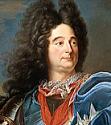


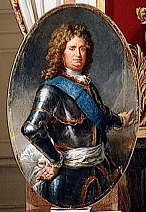
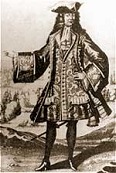

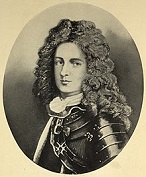
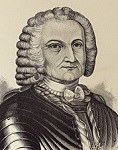

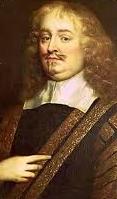


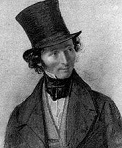

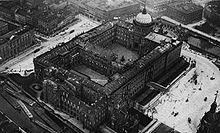
1702
On Jan. 9 (Dec. 29 Old Style) the
Battle of Erastfer (Errestfer) (Erastvere)
in modern-day Estnia is a V for 18K Russians under Boris Sheremetev over 2.5K Swedish troops under Wolmar Anton von Schlippenbachm,
becoming the first significant Russian V in the Great Northern War, after which Peter I the Great promises Augustus II of Poland
20K troops, 100K lbs. of gunpowder, and 100K rubles/year for three years to guarantee Poland's continued participation in the war as he invades Ingria.
On Mar. 7 William III attaints the 14-y.-o. prince of Wales James III (James Francis Edward Stuart) (1688-1766)
of high treason under the new "King Ralph" Treason Act of 1702 (preventing interference with the royal succession), causing him
to grow into the Old Pretender; too bad, on Mar. 8 king (since 1689) William III (b. 1650) dies at Kensington Palace after being thrown from his horse, and is succeeded by his lace-loving
sister-in-law and cousin (2nd daughter of James II and his 1st wife Anne Hyde) (devout Anglican)
Anne Stuart (Stewart) (1665-1714) (the 49th British monarch), becoming the last Stuart (Stewart) monarch
(until Aug. 1, 1714), as well as the last English sovereign to veto an act of Parliament (in 1708) (after that the remedy for failed legislation is to seat a new cabinet); she takes the throne
childless and without a direct heir; William III's untimely death nullifies the Settlement Act, but she abides by it; she has the family disease of porphyria; she rules through ministers,
and Sidney Godolphin returns as chief minister of the British cabinet (until 1710); she never visits Scotland during her reign; like James Stuart, she begins her reign a few years after the
beginning of a cent. when the MF alert goes from red to yellow or green (1603, 1702)?; the Scottish parliament refuses to recognize her, claiming the right to pick their own successor to the
Scottish crown as long as he is Protestant, and answers English calls for parliamentary union with rejection of English interference in their internal affairs, pissing-off the English and
causing them to pass punitive laws against Scottish goods; meanwhile on May 4 Queen Anne's War
(Am. side of the War of the Spanish Succession) (ends 1713), the 2nd of the French and Indian wars (first 1690) begins as England declares war on France; early Vs in the
Second War of the Grand Alliance cause Queen Anne to create up-and-coming John Churchill (1650-1722)
as the 1st Duke of Marlborough in Dec., and place him at the head of the English army as capt.-gen. with a free hand (along with
Eugene of Savoy in the service of Austria); the French are out-generaled, and Marlborough takes Venlo, Ruremonde, and Liege, and capture and burn Spanish-held St. Augustine in Fla.;
the Tories gain power in England, and seek to get revenge against the Whigs, while Godolphin and Marlborough attempt to stifle them;
Churchill's wife Lady Sarah Churchill (nee Jennings) (1660-1744),
a lady of the queen's bedchamber who has been her best friend since her 1683 marriage begins to exert enough control over her to make English politicians uncomfortable,
and she ends up dumping her for a new favorite, her cousin Lady Abigail Masham (1670-1734).
On Mar. 11 England's first successful daily newspaper The Daily Courant
begins pub. in London, run by Elizabeth Mallet of King's Arms Tavern in
Fleet Bridge, London, who prints editorial-fee foreign news only on one side of the page, and advertisements on the other; it is soon acquired by
Samuel Buckley at the Sign of the Dolphin in Little Britain, London; in 1735 it merges with the "Daily Gazetteer".
On June 11 Queen Anne appoints Joseph Dudley (1647-1720)
as British gov. of Mass. (until Nov. 9, 1715), who becomes unpopular but foils attempts to have him removed.
On July 19 (July 8 Old Style) the Battle of Kliszow (Klissow) (Klezow)
is a V for Charles II of Sweden against Saxon field marshal Adam Heinrich von Steinau (-1712),
sparking the popular romantic Camisard Rebellion (ends 1704)
against Louis XIV by anti-papal Huguenot peasants in Languedoc pissed-off by the 1685 revocation of the Edict of Nantes, led by able military leader
Jean Cavalier (1681-1740)
in the mountainous Cevennes (Cévennes) region of S France (home of the descendants of the Visigoths), wearing black
camisards (Fr. "chemise") smocks over their armor that give them their name, engaging in guerrilla (mainly night)
warfare against royal troops, burning Roman Catholic churches and killing priests, causing the Catholics to fight back a little too eagerly, razing over 450 villages
and exterminating the pop., while Pope Clement XI eggs them on with a papal bull,
calling them the "execrable race of the ancient Albigenses", and promising remission of sins to the newly-formed Roman Catholic
Cadets of the Cross (White Camisards) (Florentines).
On Aug. 15 the Battle of Luzzara
on the right bank of the Po River in Italy between the Austrians under Prince Eugene of Savoy and the French under the duc de Vendome is a push,
but gives France the advantage in Italy (until 1706).
On Oct. 14 after receiving orders from Louis XIV to attack Swabia, the French under
Claude Louis Hector, Duc de Villars (1653-1734)
cross the Rhine River at Weil am Rhein (N of Basle), then fight the imperial forces under
Louis William, Margrave of Baden-Baden at the
Battle of Friedlingen;
France wins, but loses 1,703 KIA and 2,601 wounded vs. 355 KIA and 742 wounded on the imperal side, and are unable to join the Bavarians;
Villars begins his rise to immortality in France, being promoted to marshal and becoming Louis XIV's military go-to man, later capping his career with
a promotion to marshal-gen. of France in 1734 (one of only six to make it).
On Oct. 23 after unsuccessfully attempting to capture the Spanish port of Cadiz in the hopes of securing a naval base for operations against the French
at Toulon, the Battle of Vigo Bay (Rande) in N Spain
sees the richest fleet in history, the 3-galleon Spanish Silver Squad quartered in Vigo Bay in San Simon's inlet under Spanish adm.
Manuel de Velasco y Tejada and
French adm. Francois Louis de Rousselet, Marquis de Chateaurenault (1637-1716)
defeated by the Grand Alliance of the English under Adm. Sir George Rooke (1650-1709)
and the Dutch under Adm. Philips van Almonde (1644-1711),
losing all its ships along with 2K sailors, only to find that most of the silver treasure had been unloaded before the attack.
On Nov. 27 anti-Hapsburg pro-Bourbon
Francisco Fernandez de la Cueva (Cuervo) Enriquez, Marques de Cuellar, 10th Duke of Alburquerque (1666-1724)
becomes Spanish viceroy of New Spain (until Jan. 14, 1711) (the first r is later dropped for the benefit of los estupidos Anglos?);
his first act is to okay a 10-year French concession for a trading post dealing in black slaves; on Jan. 6, 1703 his palace guards appear in
French uniforms, incl. 3-cornered hats, and he becomes known for the luxury and magnificence of his court, then extorts all the money he can to
send to support the Bourbons in the Spanish War of Succession, causing govt. employees to go without pay, leading to the streets being infested
with brigands; meanwhile he rebuilds the coast guard to fight pirates and works to kick the English and Dutch out.
On Dec. 16 after an edict by Peter I the Great, the Moscow Gazette (Moskovskaya Vedomosti)
newspaper begins pub. in Moscow, Russia, becoming Russia's first newspaper, pub. whenever he wants to blow his horn, moving to St. Petersburg in 1711 and reaching 4K circ.,
changing to the name "Sankt-Petersburgskie Vedomosti" in 1727 by the Russian Academy of Sciences after Big Peter's 1725 death, going biweekly; in 1914 it is renamed
"Petrogradskie Vedomosti"; it ceases pub. in 1917.
On Dec. 25 the first missionary of the Society for the Propagation of the Gospel (SPG)
arrives in S.C., and is followed by hundreds more, who work to make Anglican converts in the mainly dissenter English colonies, even though no Anglican bishop is ever assigned to them?
Prussia gains control of Krefeld on the Rhine River 19 mi. WSW of Essen.
Charles XII of Sweden takes Warsaw, Lublin (100 mi. SE of Warsaw), and Krakow (Cracow).
Srei Thoamareachea (Thommo Reachea) II (-1747) becomes king of Cambodia (until 1703).
Serfdom is abolished in Denmark.
East and West New Jersey are united as the Royal Colony of New Jersey (N.J.).
The Inquisition begins persecuting Marranos (converted Jews) in
Rio de Janeiro.
Dr. Thomas Bray gets a revised provincial Church Act passed by the Provincial Assembly.
Alabama (Ala.) (Muskogee "town") (named after the Alabama or Alibamon tribe of the Creek confederacy) is
founded at Ft. Louis de la Louisiane on the Mobile River by French Canadian brothers
Pierre Le Moyne d'Iberville (1661-1706)

 and Jean-Baptiste Le Moyne, Sieur de Bienville (1680-1767),
becoming the site of the city of Mobile, Ala. (modern-day pop. 195K/619K), which is incorporated as a
town on Jan. 20, 1814 and as a city on Dec. 17, 1819.
The Asiento Guinea Co.
is founded for the America-Africa slave trade.
The Anglican Church is officially established in Md., supported by taxes.
Abbot Mekhitar of Sebaste (1676-1749)
founds the Order of the Mekhitarists
of Roman Catholic Armenian monks in Constantinople.
Alessandro Scarlatti moves to Florence under the patronage of Prince Ferdinand III of Tuscany (until 1703).
Jesuit College in Breslau is founded.
Artist Jean Antoine Watteau arrives in Paris.
Japanese painter Ogota Korin (1661-1716) unites the Kano and Yamato imperial schools of painting.
The first English pantomime is given at Drury Lane in London.
Sports:
Queen Anne gives royal approval to horseracing in England, and originates the sweepstakes idea (racing for cash awards).
Architecture:
Buckingham House (Palace)
is built by the Duke of Buckingham on the site of a notorious brothel in London (finished 1703); it is remodeled in 1825, a ballroom added
in 1856, and a new front built in 1913.
Prussian king Frederick I rebuilds the City Palace (Berliner Stadtschloss)
in Berlin in Protestant Baroque Style, designed in the shape of a cube enclosing a magnificently ornamented courtyard by
architect Andreas Schlueter (Schlüter) (1660-1714),
who is replaced in 1706-13 by Johann Friedrich Eosander von Goethe (Göthe); in 1845 Frederick William IV has a dome built by
Friedrich August Stueler (Stüler) (1800-65)
based on a design by Karl Friedrich Schinkel (1781-1841);
further interior work is done by Georg Wenzeslaus von Knobelsdorff, Carl von Gontard et al.; too bad, the Communist regime of East Berlin
demolishes it in late 1950.
Fischer von Erlach finishes the
Church of the Holy Trinity
in Salzburg (begun 1694).
The Palladian Octagon Orleans House
near the Thames River in Twickenham, London, England, designed by architect
John James (1673-1746)
is begun (finished 1737); the Octagon Room
is designed by James Gibbs (1682-1754),
and is preserved when the property is demolished in 1926.
Inventions:
George Sorocold
(1668-1739) of Derby, England invents the
Tidal Pump - the
Oral B Pulsar, changing the way you brush forever is only 3 centuries away?
Science:
Dutch natural philosopher
Guillaume (Wilhelm) Homberg
(1652-1715) discovers
Boron and
Borax - no mule team needed?
Leipzig, Germany-born philosopher
Gottfried Wilhelm von Leibniz
(1646-1716) pub. the
Law of Continuity,
which he applies to human psychology, becoming the first to postulate
an unconscious mind; he also introduces the concept of
threshold.
Nonfiction:
Cornelius van Bynkershoek (1673-1743), De Dominio Maris Dissertatio;
sets a 3-mi. territorial limit on coasts based on the range of cannon.
Edward Bysshe, The Art of English Poetry.
Daniel Defoe (1659-1731), The Shortest Way with the Dissenters.
George Farquhar (1677-1707), Love and Business; incl. "A Discourse Upon Comedy".
Edward Hyde, 1st Earl of Clarendon (1609-74),
The History of the Rebellion and Civil Wars in England: Begun in the Year 1641
(posth.) (3 vols.) (1702-4); ed. by his son Laurence Hyde, Earl of Rochester (1641-1711);
the first complete detailed history of the English Civil War, written by a key player,
pushing his royalist views, which David Hume assesses in his 1756 "The History of Great Britain":
"This age affords great materials for history; but did not produce any accomplished historian.
Clarendon, however, will always be esteemed an entertaining writer, even independent of our
curiosity to know the facts, which he relates. His style is prolix and redundant, and
suffocates us by the length of its periods: But it discovers imagination and sentiment, and
pleases us at the same time that we disapprove of it. He is more partial in appearance than
in reality: For he seems perpetually anxious to apologize for the king; but his apologies
are often well grounded. He is less partial in his relation of facts, than in his account
of characters: He was too honest a man to falsify the former; his affections were easily
capable, unknown to himself, of disguising the latter. An air of probity and goodness runs
through the whole work; as these qualities did in reality embellish the whole life of the author."
Cotton Mather (1663-1728),
Magnalia Christi Americana: The Ecclesiastical History of New England
(2 vols.) (London); the Puritan wicca experience in Am. 1620-98?
William Penn (1644-1718), Primitive Christianity Revived.
Georg Ernst Stahl (1659-1734), Specimen Becherianum.
Music:
Reinhard Keiser (1674-1739), Stortebeker und Jodge Michels
(opera) (Hamburg).
Plays:
Susanna Centlivre (1667-1723), The Beau Duel; or, A Soldier for the Ladies;
The Stolen Heiress.
Colley Cibber (1671-1757), The Schoolboy;
She Wou'd and She Wou'd Not.
George Farquhar (1677-1707), The Inconstant; or, The Way to Win Him (comedy);
The Twin Rivals (comedy).
Nicholas Rowe (1674-1718), The Fair Penitent;
adaptation of Philip Massinger's and Nathan Field's "Fatal Dowry"; big hit; set in Genoa; Sciolto, Altamont, Horatio, young rake Lothario, Rossano,
infidelity queen Calista, Lucilla; causes the term Lothario for young rake to become popular; makes a fan of Samuel Johnson.
Sir Charles Sedley (1639-1701),
Beauty the Conqueror; or, The Death of Marc Antony
(posth.);
The Miscellaneous Works of Sir Charles Sedley (posth.).
Births:
French gen. Thomas Arthur, Comte de Lally, Baron de Tollendal
(d. 1766) on Jan. 13; of Irish Jacobite descent.
Japanese emperor #114 (1709-35) Nakamikado (Yasuhito)
(d. 1737) on Jan. 14; 5th son of Higashiyama (1675-1710).
English highwayman John "Honest Jack" Sheppard
(d. 1724) on Mar. 4 in White's Road, Spitalfields, London; Macheath in John Gay's "The Beggar's Opera" (1728).
English Noncomformist divine Philip Doddridge
(d. 1751) on June 26.
Swiss-French painter Jean-Etienne Liotard
(d. 1789) on Dec. 22 in Geneva.
Portuguese composer Francisco Antonio de Almeida
(d. 1755).
French Rococo sculptor (in England) Louis Francois Roubiliac
(d. 1762); settles in Britain in 1732.
Am. Quaker writer Sophia Wigington Hume
(d. 1774) in S.C.
Japanese poet Yokai Yagu
(d. 1783).
Am. Rev. War leader William Peters
(d. 1786) in Liverpool, England; brother of Richard Peters (1704-76); emigrates to the U.S. in 1739; father of Richard Peters Jr. (1744-1828).
Deaths:
English Quaker leader Margaret Askew (Fell) (Fox) (b. 1614) in Swarthmoor Hall, Ulverston, Cumbria;
her grandson John Abraham sells the hall in 1759.
Swedish scientist Olof Rudbeck the Elder (b. 1630).
French organist-composer Nicolas Antoine Le Begue (b. 1631) on July 6 in Paris.
English/Scottish king (1689-1702) William III/I (b. 1650) on Mar. 8 in Kensington Palace, London.
and Jean-Baptiste Le Moyne, Sieur de Bienville (1680-1767),
becoming the site of the city of Mobile, Ala. (modern-day pop. 195K/619K), which is incorporated as a
town on Jan. 20, 1814 and as a city on Dec. 17, 1819.
The Asiento Guinea Co.
is founded for the America-Africa slave trade.
The Anglican Church is officially established in Md., supported by taxes.
Abbot Mekhitar of Sebaste (1676-1749)
founds the Order of the Mekhitarists
of Roman Catholic Armenian monks in Constantinople.
Alessandro Scarlatti moves to Florence under the patronage of Prince Ferdinand III of Tuscany (until 1703).
Jesuit College in Breslau is founded.
Artist Jean Antoine Watteau arrives in Paris.
Japanese painter Ogota Korin (1661-1716) unites the Kano and Yamato imperial schools of painting.
The first English pantomime is given at Drury Lane in London.
Sports:
Queen Anne gives royal approval to horseracing in England, and originates the sweepstakes idea (racing for cash awards).
Architecture:
Buckingham House (Palace)
is built by the Duke of Buckingham on the site of a notorious brothel in London (finished 1703); it is remodeled in 1825, a ballroom added
in 1856, and a new front built in 1913.
Prussian king Frederick I rebuilds the City Palace (Berliner Stadtschloss)
in Berlin in Protestant Baroque Style, designed in the shape of a cube enclosing a magnificently ornamented courtyard by
architect Andreas Schlueter (Schlüter) (1660-1714),
who is replaced in 1706-13 by Johann Friedrich Eosander von Goethe (Göthe); in 1845 Frederick William IV has a dome built by
Friedrich August Stueler (Stüler) (1800-65)
based on a design by Karl Friedrich Schinkel (1781-1841);
further interior work is done by Georg Wenzeslaus von Knobelsdorff, Carl von Gontard et al.; too bad, the Communist regime of East Berlin
demolishes it in late 1950.
Fischer von Erlach finishes the
Church of the Holy Trinity
in Salzburg (begun 1694).
The Palladian Octagon Orleans House
near the Thames River in Twickenham, London, England, designed by architect
John James (1673-1746)
is begun (finished 1737); the Octagon Room
is designed by James Gibbs (1682-1754),
and is preserved when the property is demolished in 1926.
Inventions:
George Sorocold
(1668-1739) of Derby, England invents the
Tidal Pump - the
Oral B Pulsar, changing the way you brush forever is only 3 centuries away?
Science:
Dutch natural philosopher
Guillaume (Wilhelm) Homberg
(1652-1715) discovers
Boron and
Borax - no mule team needed?
Leipzig, Germany-born philosopher
Gottfried Wilhelm von Leibniz
(1646-1716) pub. the
Law of Continuity,
which he applies to human psychology, becoming the first to postulate
an unconscious mind; he also introduces the concept of
threshold.
Nonfiction:
Cornelius van Bynkershoek (1673-1743), De Dominio Maris Dissertatio;
sets a 3-mi. territorial limit on coasts based on the range of cannon.
Edward Bysshe, The Art of English Poetry.
Daniel Defoe (1659-1731), The Shortest Way with the Dissenters.
George Farquhar (1677-1707), Love and Business; incl. "A Discourse Upon Comedy".
Edward Hyde, 1st Earl of Clarendon (1609-74),
The History of the Rebellion and Civil Wars in England: Begun in the Year 1641
(posth.) (3 vols.) (1702-4); ed. by his son Laurence Hyde, Earl of Rochester (1641-1711);
the first complete detailed history of the English Civil War, written by a key player,
pushing his royalist views, which David Hume assesses in his 1756 "The History of Great Britain":
"This age affords great materials for history; but did not produce any accomplished historian.
Clarendon, however, will always be esteemed an entertaining writer, even independent of our
curiosity to know the facts, which he relates. His style is prolix and redundant, and
suffocates us by the length of its periods: But it discovers imagination and sentiment, and
pleases us at the same time that we disapprove of it. He is more partial in appearance than
in reality: For he seems perpetually anxious to apologize for the king; but his apologies
are often well grounded. He is less partial in his relation of facts, than in his account
of characters: He was too honest a man to falsify the former; his affections were easily
capable, unknown to himself, of disguising the latter. An air of probity and goodness runs
through the whole work; as these qualities did in reality embellish the whole life of the author."
Cotton Mather (1663-1728),
Magnalia Christi Americana: The Ecclesiastical History of New England
(2 vols.) (London); the Puritan wicca experience in Am. 1620-98?
William Penn (1644-1718), Primitive Christianity Revived.
Georg Ernst Stahl (1659-1734), Specimen Becherianum.
Music:
Reinhard Keiser (1674-1739), Stortebeker und Jodge Michels
(opera) (Hamburg).
Plays:
Susanna Centlivre (1667-1723), The Beau Duel; or, A Soldier for the Ladies;
The Stolen Heiress.
Colley Cibber (1671-1757), The Schoolboy;
She Wou'd and She Wou'd Not.
George Farquhar (1677-1707), The Inconstant; or, The Way to Win Him (comedy);
The Twin Rivals (comedy).
Nicholas Rowe (1674-1718), The Fair Penitent;
adaptation of Philip Massinger's and Nathan Field's "Fatal Dowry"; big hit; set in Genoa; Sciolto, Altamont, Horatio, young rake Lothario, Rossano,
infidelity queen Calista, Lucilla; causes the term Lothario for young rake to become popular; makes a fan of Samuel Johnson.
Sir Charles Sedley (1639-1701),
Beauty the Conqueror; or, The Death of Marc Antony
(posth.);
The Miscellaneous Works of Sir Charles Sedley (posth.).
Births:
French gen. Thomas Arthur, Comte de Lally, Baron de Tollendal
(d. 1766) on Jan. 13; of Irish Jacobite descent.
Japanese emperor #114 (1709-35) Nakamikado (Yasuhito)
(d. 1737) on Jan. 14; 5th son of Higashiyama (1675-1710).
English highwayman John "Honest Jack" Sheppard
(d. 1724) on Mar. 4 in White's Road, Spitalfields, London; Macheath in John Gay's "The Beggar's Opera" (1728).
English Noncomformist divine Philip Doddridge
(d. 1751) on June 26.
Swiss-French painter Jean-Etienne Liotard
(d. 1789) on Dec. 22 in Geneva.
Portuguese composer Francisco Antonio de Almeida
(d. 1755).
French Rococo sculptor (in England) Louis Francois Roubiliac
(d. 1762); settles in Britain in 1732.
Am. Quaker writer Sophia Wigington Hume
(d. 1774) in S.C.
Japanese poet Yokai Yagu
(d. 1783).
Am. Rev. War leader William Peters
(d. 1786) in Liverpool, England; brother of Richard Peters (1704-76); emigrates to the U.S. in 1739; father of Richard Peters Jr. (1744-1828).
Deaths:
English Quaker leader Margaret Askew (Fell) (Fox) (b. 1614) in Swarthmoor Hall, Ulverston, Cumbria;
her grandson John Abraham sells the hall in 1759.
Swedish scientist Olof Rudbeck the Elder (b. 1630).
French organist-composer Nicolas Antoine Le Begue (b. 1631) on July 6 in Paris.
English/Scottish king (1689-1702) William III/I (b. 1650) on Mar. 8 in Kensington Palace, London.




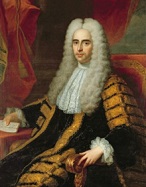
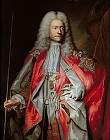
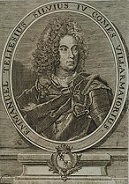



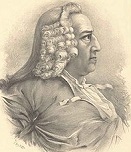
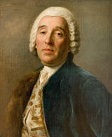

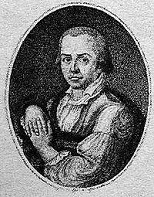

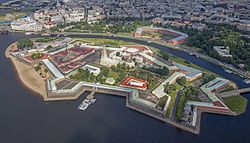
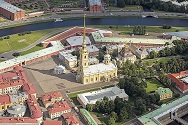
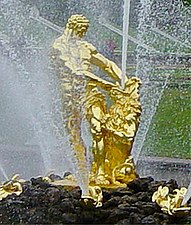
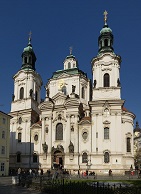
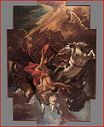
1703 On Feb. 4 the Revenge of the 47 Ronin sees 47 Japanese ronin condemned for avenging their executed master Asano Naganori forced to commit seppuku. On Feb. 10 800 Camisards under Jean (Joan) Cavalier (1681-1740) rout French royal troops at the Battle of Vagnas, then get defeated and flee, and return on Apr. 30, where they are defeated at the Battle of Tour de Billot, which only causes more Huguenot volunteers to sign up and get their shirts? On Apr. 21 3K Swedes under Charles XII defeat 3.5K Saxons under Count Adam Heinrich von Steinau at the decisive Battle of Pultusk, losing only 18 KIA vs. 200 KIA and 800 captured for the Saxons; Steinau leaves Saxony to service Venice as "part of his old person". On May 1 the Russians take Nienshanz Fortress at the mouth of the Neva River, and drive the Swedes from the Neva Delta, then seize Noteburg and rename it Schlusselburg; on May 16 Tsar (1682-1721) Peter I the Great (1672-1725) pissed-off at his Moscow nobles failing to become kulturny and adopt Western culture, officially founds St. Petersburg (modern-day pop. 5.3M) on the banks of the Neva River on territory he just took from Sweden as Russia's "Window on the West" (modern pop. 4.7M), using serfs as expendable slaves; "A giant built it; lacking stones/ "He paved the swamps with human bones" (Mikhail Dmitriev); Peter I builds the Fortress of St. Peter and St. Paul on a small island in the river on May 27, 1703-1740, designed by Swiss Italian architect Domenico Trezzini (1670-1734), who goes on to design Kronstadt (1704) on Kotlin Island 19 mi. W of St. Petersburg, St. Peter and St. Paul Cathedral (1712-33) (world's tallest Orthodox Catholic bell tower), Peter the Great's Summer House (1710-14), the Alexander Nevsky Monastery (1710-13), the Winter Palace (1711-53), and the Twelve Collegia (Colleges) Bldg. Complex (1722-44) (main bldg. of St. Petersburg U.), founding Petrine Baroque, which departs from the Naryshin Baroque of Moscow and follows the Dutch, Danish, and Swedish (Flemish Renassance) styles; in 1709 Peter I begins the Peterhof Palace (Dutch "Piterhof" = Peter's Court), an attempt to ape Louis XIV's Versailles Palace, causing it to become known as "the Russian Versailles", with Domenico Trezzini as the main architect in 1714, succeeded in 1716 by Paris-born Jean-Baptiste Alexandre Le Blond (1679-1719) (Blond, James-Baptiste Blond)?, with his teacher, Versailles landscaper Andre (André) Le Notre (Nostre) (1613-1700) hired to design the gardens; the Grand Cascade of 64 fountains, modelled on Louis XIV's Chateau de Marly features the Samson Fountain (1736), with a 66-ft.-high water jet, which is upgraded in 1800-2 by local Russian Neoclassical sculptor Mikhail Ivanovich Kozlovsky (1753-1802), a gilt bronze statue of Greek god Samson tearing open the jaws of a lion to represent Russia's big V over Sweden in the Great Northern War (1700-21), with the lion representing Sweden's coat of arms, and Samson representing Russia's big V on St. Sampson's Day; in 1747-56 Italian architect Francesco Bartolomeo Rastrelli (1700-71) is hired by Tsarina Elisabeth to design an expansion along with the Winter Palace; Trezzini's architect son Pietro has Peter I the Great as a godfather; this year 8-y.-o. black African slave Abraham (Ibrahim) Petrovich Gannibal (Hannibal) (1696-1781), who claims he was kidnapped from a royal tribal family in Africa is presented by a Russian diplomat as a gift to Peter I the Great, becoming his adopted son, and rising quickly to a 5-language linguist, civil engineer, diplomat, and gen. (Europe's first black intellectual?) - so cute everybody should own one? In May after invading the Spanish Netherlands, the duke of Marlborough takes Bonn, followed in Aug. by Huy; meanwhile Prince Eugene of Savoy is driven out of N Italy and almost trapped in the Alps until the Duchy of Savoy defects to the Grand Alliance, forcing the French army in his rear to turn back; Eugene then campaigns throughout S Germany along the Rhine. In May after English naval Vs against Spain permit England to detach Portugal from its French alliance, English ambassador John Methuen (1650-1706) negotiates the two Methuen Treaties, the first a 4-sided treaty, negotiated by Methuen with the help of his son Sir Paul Methuen (1672-1757) for England, Karl Ernst, Graf von Waldstein for HRE Joseph I, Franciscus van Shonenberg (AKA Jacob Abraham Belmonte) (a Marrano) for the United Provinces, and King Pedro II for Portugal, establishing an offensive-defensive alliance between Britain and Portugal, and promising to send the emperor's son Archduke Charles (later HRE Charles VI) to Portugal with land forces to win the crown of Spain, along with naval protection of the Portuguese coast against French and Spanish attack, followed by the 2nd on Dec. 27 with John Methuen signing for England, and Manuel Teles da Silva, 3rd Marquis de Alegrete (1682-1736) signing for Portugal, giving Portuguese (port) wines (grown in the Douro (Duero) River Valley in N Portugal and shipped in rabelo boats the Atlantic port of Porto) a one-third break on English duties in return for Portugal agreeing to import all its woolens from England duty-free, which, combined with the war with France depriving English drinkers of French wine causes the popularity of Portuguese port wine in England to zoom (not just for Whigs anymore?); meanwhile the Portuguese renounce manufacturing (except porcelain) in order to guarantee the security of Brazil, losing the Industrial Rev.?; too bad, while returning from Lisbon, Waldstein is captured at sea by the French, and exchanged a year later for Villeroi, who was captured in Italy by Prince Eugene. On June 15 Francis II Rakoczy and Tamas (Tamás) Esze (1666-1708) lead a Kuruc uprising against the Hapsburgs in Munkacs (located in Subcarpathian Ruthenia in the corner between Poland, Ukraine, Slovakia, Hungary and Romania, known for its large Jewish pop.), hooking up in Lawoczne, Poland and obtaining French money and 600 Polish mercenaries; too bad, after the Hungarian nobles snub his call, he has to rely on a peasant army, but takes most of Hungary E and N of the Danube River by late Sept., then raids S of the Danube River. On Aug. 8 the Weiner Zeitung (originally "Wiennerisches Diarium" until 1805) newspaper is founded in Vienna, Austria by the stonemasons building Stephans Dom; in 1810 it becomes the official newspaper of the govt., which acquires it in 1857 and sells it to a private co. in 1998, continuing to use it for official govt. announcements, with a circ. of 24K; becoming one of Austria's four main newspapers along with the right-liberal "Die Presse", the left-liberal "Die Standard", and the Roman Catholic "Salzburger Nachrichten". In Aug. broke 18-y.-o. Baroque musician Johann Sebastian Bach (1685-1730) gets his first serious job as organist of the Neue Kirche in Arnstadt. On Sept. 11 after the War of the Spanish Succession makes the English govt. about-face on his case, William Dampier, new cmdr. of the 26-gun 120-man English navy ship St. George sails from Kinsale, Ireland to fight the Spanish and French along with 96-ton 16-gun 63-man galleon Cinque Ports; they go on to capture three Spanish ships returning from Buenos Aires, and fight to a push with a French ship; he returns to England in Dec. 1707 (his 2nd circumnavigation of the Earth) after giving Daniel Defoe a subject for a new novel? On Sept. 20 the First Battle of Hochstadt (Höchstädt) (2nd in 1704/1800) in Bavaria sees a French-Bavarian army of 24K under French marshal Claude de Villars defeat 16K Austrians under Gen. Hermann Otto II of Limburg-Stirum (1646-1704). On Nov. 15 after the Bavarians invade Tyrol and are repulsed, the French link up with them and throw the Austrians out of the Bavarian Palatinate at the Battle of Spira. In Nov. Queen Anne's Bounty is established, granting the first fruits and tithes (originally intended for the pope) that Henry VIII had confiscated for the crown in trust for increasing the incomes of small benefices for the poorer clergy. On Dec. 7 (Nov. 26 Old Style) the Great Storm of 1703 rages in C-S England, an extratropical cyclone (Category 2?) that collapses 2K chimneys in London, destroys 4K oaks in the New Forest, kills 1K seamen on the Goodwin Sands in Kent, killing a total of 8K and destroying the new Eddystone Lighthouse; Daniel Defoe calls it God's punishment for poor English performance against the Roman Catholic armies in the War of the Spanish Succession, while the Church of England calls it God's punishment for the nation's sins. On Dec. 28 sultan (since 1695) Mustafa II (b. 1664) dies after being forced to abdicate by a coup triggered by the Edirne Event, an attempt by the Jannisaries to restore power to the sultanate by making the position of cavalryman (timar) hereditary, and his brother Ahmed III (1673-1736) becomes Ottoman sultan #23 (until Sept. 20, 1730), starting a Muslim cultural revival while engaging in the Muslim pastime of constant warfare; too bad, the revolt backfires, decreasing the power of the sultanate and increasing the power of the Janissaries and kadis (Sharia judges); the real power is in the hands of his daughter Hatice Sultan and her grand vizier hubby Nevsehirli Damat Ibrahim Pasha (1666-1730), who rule during the Tulip Era (Period) (ends Sept. 28, 1730), a relative period of peace in which the Dutch tulip craze infects the Ottoman court. Archduke Charles lands in Spain, invades Catalonia, and is proclaimed King Charles III of Spain in Madrid. Irish soldier James Butler, 2nd Duke of Ormonde (1665-1745), who served under William III since 1688 is made lord lt. of Ireland like his grandfather the 1st duke in the 1640s, serving from 1703-5 and 1710-11. Chettha IV becomes king of Cambodia for the 3rd time (until 1706). Philippe de Rigaud, Marquis de Vaudreuil (1643-1725), Montreal gov. (since 1702) is appointed gov.-gen. of New France (until 1725). Delaware breaks away from Penn. The Popery (Gavelkind) Act is passed by the British Parliament, modifying the Irish practice of Gavelkind (equal division of land among a dead landholder's sons, also used by the Jutes in Kent), giving all the land to the eldest son if he converts to Protestantism; land holdings by Irish Catholics shrink from 25% in 1688 to 14% in 1704 to 5% in 1776. The Scottish parliament passes an act making the succession to the crown of Scotland different from that to the English crown, causing the English to retaliate with new trade restrictions, causing a committee to be created to avert war (ends 1707). The pop. of Jerusalem led by Muhammad ibn Mustafa al-Husaini revolts against the excessive taxation of gov. Jurji Muhammad Pasha, taking his citadel and causing him to flee; al-Husaini becomes the new gov. until Nov. 1705 when new provincial gov. of Damascus Jurji Muhammad attacks Jerusalem with 2K Janissaries and regains control. The body of St. Francis Xavier in Goa is placed in a marble mausoleum donated by Grand Duke Cosimo III of Tuscany; the 32 panels around the casket include the "world's most famous crab", which allegedly returned Xavier's crucifix after he had lost it at sea. Isaac Newton is elected pres. of the Royal Society; shortly afterward the instruments, papers, and only authentic portrait of his bitter rival Robert Hooke vanish, causing the latter's fame to sink into oblivion for over two cents.; meanwhile Newton befriends French Protestant refugee Jean Desaguliers, one of two Royal Society curators of experiments, who becomes a leader in the spread of Freemasonry in Europe, and in 1731 as master of the Masonic lodge in The Hague presides over the initiation of Duke Francois of Lorraine, who becomes the first Euro prince to join, and after he marries Maria Theresa of Austria becomes HRE Francis I, fathering Marie Antoinette. Alessandro Scarlatti becomes asst. choirmaster at the church of Santa Maria Maggiore in Rome. The original Dumb and Dummer? Harvard grad Jeremiah Dummer (1681-1739) becomes the first colonial-born Am. to receive a Ph.D. from a Euro univ. (U. of Utrecht); he returns to Boston and becomes a preacher, then leaves for England in 1708, where he goofs up his political career and ends up as agent for the Mass. Bay Province in 1710-21. Architecture: The iron chain Luding Suspension Bridge over the Dadu River in Luding County, Sichuan, China is built, using 11 iron chains to span 100m. Bavarian architect Christoph (Krystof) Dientzenhofer (1655-1722) begins the Baroque St. Nicholas (Nikolas) Church (Malá Strana) in Prague on the site of a 13th cent. Gothic church (finished 1711), with a copper cupola built in 1737-52 based on plans by his son Kilian Ignaz Dientzenhofer (1689-1751), becoming Dientzenhof's magnum opus, and the #1 most beautiful Baroque church in Prague; too bad, during the 20th cent. Cold War the Commies use it as an observatory for watching the access route to the West German, U.S., and Yugoslav embassies. Nonfiction: John Adair, Description of the Sea Coasts and Islands Off Scotland. Louis-Armande de Lom d'Arce, Baron de Lahontan (1666-1715), Nouveaux Voyages; Memoires de l'Amerique Septentrionale. Universal, Historical, Geographical, Chronological and Classical Dictionary. William Dampier (1651-1715), A Voyage to New Holland; his 1699-1701 expedition. Charles Davenant (1656-1714), Essays upon Peace at Home and War Abroad (Nov.); pisses-off his Tory Party for promoting the nonpartisan attitude favored by the queen. Lawrence Echard (1670-1730), The Gazetteer's or Newsman's Interpreter; the first popular geographical dictionary, errors and all? Seraphim (1670-1735), Vernacular Greek New Testament; pisses-off the Greek Orthodox clergy that the Bible can be read by the common people, and the work is banned by Patriarch Gabriel III. Art: Sebastiano Ricci (1659-1734), Fall of Phaeton (1703-4). Music: J.S. Bach (1685-1750), Toccata and Fugue in D minor (1703-7) (for organ); big hit - take it brother, hallelujah? Giuseppe Torelli (1658-1709), Sinfonia for Four Trumpets. Plays: Charles Boyle, 4th Earl of Orrery (1674-1731), As You Find It (comedy). Susanna Centlivre (1667-1723), Love's Contrivance. Sir Richard Steele (1672-1729), The Lying Lover; or The Ladies' Friendship (sentimental comedy); a flop. Poetry: Mary Chudleigh (1656-1710), Poems on Several Occasions; the joys of friendship between women based on shared morals and intellectual pursuits; dedicated to Queen Anne to protect her from male chauvinists? Daniel Defoe (1659-1731), Hymn to the Pillory; written in jail, where he was put for his political writings, driving him into bankruptcy. John Oldmixon (1673-1742), Amores Britannici; Epistles Historical and Gallant. Births: Indian Muslim Sufi scholar-reformer Shah Waliullah Dehlawi (Syed Qutb ad-Din Ahmad Wali Allah ibn Abd ar-Rahim al-Umari ad-Dihlawi) (d. 1762) on Feb. 21 in Moza Phalat, Delhi; son of Sufi scholar Shah Abdur Rahm. English clergyman-evangelist (founder of Methodism) John Wesley (d. 1791) on June 28 in Epworth Rectory, Lincolnshire; son of Samuel Wesley the Elder (1662-1735); brother of Charles Wesley (1707-88). Am. maj.-gen. John Winslow (d. 1774) on May 10 in Marshfield, Mass.; son of Isaac and Sarah Winslow; grandson of Josiah Winslow (1628-80); great-grandson of Edward Winslow (1595-1655); husband (1725-) of Mary Little, descendant of Pilgrim Richard Warren (1578-1628); father of Josiah Winslow, Pelham Winslow, and Isaac Winslow; owner of slave Briton Hammon. French duke Louis of Bourbon, Duke of Orleans (d. 1752) on Aug. 4 in Versailles; only son of Duke Philippe II of Orleans (1674-1723). English "Treatise on Madness" psychiatrist-physician William Battie (Batty) (d. 1776) on Sept. 1 in Modbury, Devon; son of Rev. Edward Battie; educated at Eton College, and King's College, Cambridge U. French "Diana Leaving the Bath", "Toilet of Venus" Rococo painter Francois Boucher (d. 1770) on Sept. 29 in Paris; studies painting with Lemoine, and engraving with Cars, but ends up adopting Watteau's style. Am. "Sinners in the Hands of an Angry God" Puritan Congregational revivalist preacher (pres. of Princeton U.) Jonathan Edwards (d. 1758) on Oct. 5 in East Windsor, Conn.; educated at Yale U. Am. atty.-inventor (achromatic lens) Chester Moore (Moor) (More) Hall (d. 1771) on Dec. 9 in Leigh, Essex. English schoolmaster-writer John Entick (d. 1773) in St. Dunstan's, Stepney. Japanese Buddhist artist-poet Fukuda Chiyo-ni (Kaga no Chiyo) (d. 1775) in Matto, Kaga Province (modern-day Hakusan, Ishikawa Prefecture). Arab Sunni Muslim leader (Wahhabism founder) Muhammad (Mohammed) ibn Abd al-Wahhab (d. 1792) in Ayane, Arid District, Neyjd (C Arabia); rejects bidah (religious innovation) and shirk (polytheism). Deaths: English mathematician John Wallis (b. 1616) on Oct. 28. Italian scientist Vincenzo Viviani (b. 1622) on Sept. 22; later buried in Galileo's grave in the Church of Santa Croce. French writer Charles Perrault (b. 1628) on May 16 in Paris. French financier marquis Louis de Bechamel (b. 1630). German-Austrian Jewish banker Samuel Oppenheimer (b. 1630) on May 3 in Vienna. British colonial official in North Am. #1 (1676-) Edward Randolph (b. 1632) in Apr. in Va. English diarist Samuel Pepys (b. 1633) on May 26; leaves Pepys's Diary, covering the years 1660-9, written in a private shorthand not deciphered until 1825; first pub. in 1893-9; unexpurgated ed. pub. in 1970-83. English writer Thomas Tryon (b. 1634) on Aug. 21. English super physician-scientist Robert Hooke (b. 1635) on Mar. 3. English Orientalist Thomas Hyde (b. 1636) on Feb. 18 in Oxford. Ottoman sultan (1695-1703) Mustafa II (b. 1664) on Dec. 28. English actress Susanna Verbruggen (b. 1667). French composer Nicolas de Grigny (b. 1672) on Nov. 30 in Reims.





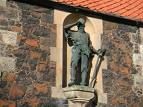
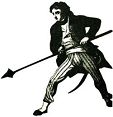
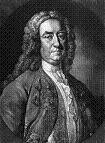
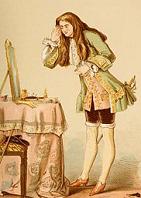


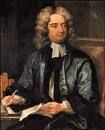




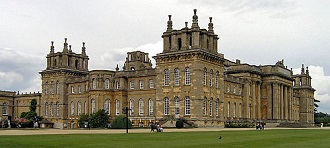


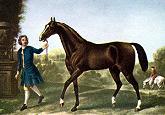
1704 On Jan. 25-26 the Apalachee Massacre (Battle of Ayubale) near modern-day Tallahassee, Fla. sees English colonists from N.C. led by Gov. James Moore along with their Creek allies raid and decimate the mainly peaceful pop. of the Big Bend area of N Spanish Fla., destroying Spanish missions and getting Apalachees to join up and resettle near the Savannah and Ocmulgee Rivers, by 1709 Spanish Fla. is depopulated outside Saint Augustine and Pensacola. On Feb. 29 Deerfield, Mass. is captured, burned, and depopulated of English colonists in a massacre by the French and their Indian allies. On Apr. 16 1K Huguenot Camisards under Jean Cavalier are defeated by 5K French troops under Marshal Montrevel at the Battle of Nages Bridge, after which a peace conference is held on May 11-16 at Pont d'Avne near Alais, and the Camisards surrender under honorable terms, with Louis XIV agreeing to give them amnesty and restore their property and partially restore their civil rights (right of assembly outside walled towns) in return for swearing allegiance to the French crown; too bad he will not let them build their own churches or restore the Edict of Nantes, causing most of them to continue the struggle another year, although leader Jean Cavalier caves in and is made a French col. with a pension, with his Camisards organized into a regiment under his command for service in Spain; too bad, the Huguenots think he sold them out and turn on him, causing him to flee from Nimes to Neu-Brisach, Alsace with his last 100 followers, then to Paris, where he tries in vain to get Louis XIV to budge, then flees to Lausanne, Switzerland, where he forms a Camisard refugee regiment, fighting for any enemy of the Frogs that will have them. On Apr. 24 Scottish-born Boston, Mass. postmaster (since 1702) James Campbell (1653-1728) (not to be confused with U.S. postmaster-gen. James Campbell, 1812-93) begins pub. the weekly Boston News-Letter, the first regularly pub. newspaper in America, expanding his regular "news letters" he had been sending to Gov. Winthrop and other colonial govs., and editing it until 1722. On July 2 22K troops of the Grand Alliance (British, Dutch, and Austrians) under the Duke of Marlborough and the Margrave of Baden schell 13K French and Bavarian troopss under the Comte d'Arco and the Marquis de Maffi at the Battle of Schellenberg (Donauworth) (Battle of Donauwörth) in Donauworth, Bavaria, winning a decisive V, with 1,342 Grand Alliance troops KIA and 3,699 wounded vs. 13K French-Bavarians KIA and 3K taken POW; Bavaria is placed under Austrian admin. On July 24 a combined British-Dutch force under British rear adm. Sir George Rooke (1650-1709) captures Spanish-held (since 1462) Gibraltar, which becomes the major British naval base in the "British pond" (the Mediterranean); on Aug. 13 Rooke attacks the French fleet off Malaga, and after a push he is criticized and resigns from the navy next Feb. - rooked out of it? On Aug. 12-13 after British forces under John Churchill, 1st Duke of Marlborough (1650-1722) march toward the Danube River, meet up with Austrian forces under Prince Eugene of Savoy near Mandelsheim, and together march ulm in ulm to Ulm, they defeat the French under marshals Camille d'Hostun de la Baume, Duc de Tallard (1652-1728) and Ferdinand, Count of Marsin (1656-1706), and the Bavarians under elector Maximilian II Emanuel at the Battle of Blenheim (Second Battle of Hochstadt) (pr. BLEN-im) (corruption of Blindheim) N of Nuremberg on the Danube River in W Bavaria 23 mi. NW of Augsburg, with 4.5K British and Austrians KIA and 7.9K wounded vs. 20K French and Bavarians KIA or wounded and 14K taken POW; the French and Bavarians are beaten so badly that the French attack on Austria is broken, and French prestige suffers from the first pitched battle lost by French troops since who knows when; the giant Allied V ensures the safety of Vienna, preventing the collapse of the Grand Alliance, becoming a turning point in the War of the Spanish Succession; from now on French military domination of Europe begins to tank; Marlborough becomes a big hero back home, and Queen Anne promises to build him his own pretty little palace in Woodstock, Oxfordshire, called Blenheim Palace (1705-22), designed by Sir John Vanbrugh (1664-1726) and Nicholas Hawksmoor (1661-1736), becoming the only non-royal non-episcopal country house in England with the title of palace; too bad, political infighting leads to the duke of Marlborough's exile, damaging Vanbrugh's rep.; meanwhile Duke Victor Amadeus I of Savoy flip-flops, ditches France and joins Austria, pissing-off the French and causing them to send troops under Gen. Vendome to trash the Piedmont; the Rakoczy uprising in Hungary is robbed of its promised help by the French and Bavarians, causing him to mint new copper coins to replace silver coins as the economy collapses. On Oct. 4 Augustus II of Poland is deposed, and once-buff Stanislaus Leszczynski (1677-1766) is elected pudgy King Stanislaus I of Poland (until Aug. 8, 1709). The original Capt. Kirk? In Oct. Scottish sailing master Alexander Selkirk (1676-1721) of the Cinque Ports (part of the William Dampier expedition), which tried to round Cape Horn only to fall prey to a scurvy outbreak which killed 48, incl. Capt. Pickering, who was replaced by 21-y.-o. Lt. Thomas Stradling, then sailed to Mexico, capturing several Spanish ships along the way, then stopped at the Juan Fernandez archipelago off the coast of Chile to resupply, is put ashore at his own request on Mas a Tierra (renamed to Robinson Crusoe by Chile in 1966) after an argument with Stradling about the seaworthiness of the old bucket, going on to live alone for 52 mo. (4 years 4 mo.) until he is rescued on Feb. 2, 1709 by Capt. Woodes Rogers (1679-1732) of the English privateer Duke, run by sailing master William Dampier (1651-1715) (engaged in 1708), whose expedition makes a £200K profit from all the booty, although Dampier dies in 1715 before receiving his share; the old barge Cinque Ports does indeed sink off the coast of Colombia and lose most of its crew, so there? On Dec. 6 the Battle of Chamkaur Sahib sees 40 Sikhs led by Guru Gobind Singh defeat 100K Muslims, with 44 Sikhs and 90K Muslims KIA. Peter the Great takes Dorpat (Tartu) and Narva, and Ivangorod is returned to Russian control; after a great fire in 1708, by 1721 the pop. of Tartu sinks to 21. Henry St. John, 1st Viscount Bolingbroke (1678-1751) (Tory MP since 1701) becomes secy. of war under English PM Sidney Godolphin (until 1710). The Spanish bloodily suppress a Pima Indian rebellion in Nueva Vizcaya, Mexico, causing permanent bitterness. The press gang is authorized by British law. The Popery (Gavelkind) Act is passed by the British Parliament, modifying the Irish practice of Gavelkind (equal division of land among a dead landholder's sons, also used by the Jutes in Kent), giving all the land to the eldest son if he converts to Protestantism; land holdings by Irish Catholics shrink from 25% in 1688 to 14% in 1704 to 5% in 1776. Former British North Am. colonial administrator Sir Edmund Andros (1637-1714)/a> is apppointed lt. gov. of Guernsey Island (until 1708) by Queen Anne, riding out his career, marrying 3rd wife Elizabeth Fitzhebert (-1717) in 1707. Welsh-born British dandy Richard "Beau" Nash (1674-1761) becomes master of ceremonies at Bath, turning it into the most fashionable resort in England, known for gambling and balls and a breakdown of class distinctions; in 1735 he appoints himself MC in Royal Tunbridge Wells (40 mi. SE of London near the East Sussex border), turning it into a famous resort patronized by the upper classes. Jeremiah Clarke (1674-1707) becomes organist at Chapel Royal. Voltaire enters a Jesuit college (until 1710). Jonathan Belcher (1682-1757) becomes the first Am.-born Mason during a visit to London, and later founds Princeton U. Baptists from R.I. petition Conn. for the right to hold religious meetings. The first subscription library opens in Berlin. The Vossische Zeitung begins pub. in Berlin (until 1933). Daniel Defoe (still in jail) begins pub. the weekly The Review (until 1713). Sports: The Darley Arabian, the greatest racehorse of its day is brought to England from Aleppo, Syria by Thomas Darley (1664-), and is bred with English mares to found the line of modern Thoroughbreds. Architecture: Germain Boffrand (1667-1754) redesigns the Hotel de Soubise in Paris (finished 1707); he returns in 1735-40 to design a suite of high Rococo interiors. Inventions: Non-toxic Prussian Blue pigment is discovered accidentally in Berlin, and used to dye Prussian army uniforms. Nonfiction: Anon., Dictionnaire de Trevoux; pub. by the Jesuits at Trevoux. Mary Astell (1666-1731), A Fair Way with the Dissenters and Their Patrons (London); An Impartial Enquiry into the Causes of Rebellion and Civil War in This Kingdom (London). Louis Bourdaloue (1632-1704), Sermons (16 vols.) (1704-37) (ed. by Bretonneau). Samuel Clarke (1675-1729), The Being and Attributes of God; attempts to prove the existence of God by a posteriori arguments based on the evidence of intelligent design; a non-starter with atheistic scientists until ? Charles Davenant (1656-1714), Memorial Concerning the Free Trade Now Tolerated Between France and Holland; promotes continuation of the policy of permitting trade; never pub. John Dennis (1657-1734), The Grounds of Criticism in Poetry; the ancients are superior to moderns because of their religious pagan attitude? Antoine Galland (1646-1715), The Thousand and One Nights: Arab Stories Translated into French (12 vols.) (1704-17); big hit; first European version tr. from Arabic, plus some stories he probably invented, incl. "Aladdin's Lamp" and "Ali Baba and the Forty Thieves"; King Shahryar and his wife Scheherezade, who tells him a new story each night to keep from being beheaded instead of bedded, incl. "The Seven Voyages of Sinbad the Sailor"; in 1706 the anon. "Grub St. Version" English trans. appears, followed in 1714 by "The Thousand and One Days: Persian Tales" by Ambrose Philips. Francis Gascoyne, Brief and True Relation of a Pilgrimage to Jerusalem, with a Description of Stony Arabia. John Harris (1666-1719), Lexicon Technicum; Or, An Universal English Dictionary of Arts and Sciences, Explaining Not Only the Terms of Art, but the Arts Themselves; first alphabetical encyclopedia in English. Pierre Jurieu (1637-1713), Histoire Critique des Dogmes et des Cultes. Raimondo Montecuccoli (1609-80), Memorie del Generale Principe di Montecuccoli (posth.). Jonathan Swift (1667-1745), The Battle of the Books; "Satire is a sort of glass, wherein beholders do generally discover everybody's face but their own"; "Instead of dirt and poison we have rather chosen to fill our hives with honey and wax; thus furnishing mankind with the two noblest of things, which are sweetness and light." Music: J.S. Bach (1685-1750), Denn Du Wirst Meine Seele; his first cantata; marks a plan to compose music according to Pythagorean principles. G.F. Handel (1685-1759), St. John's Passion. Reinhard Keiser (1674-1739), Der Gesturzte und Wieder Erhohte Nebukadnezar, Konig zu Babylon (opera) (Hamburg). Domenico Scarlatti (1685-1757), Revision of Carlo Francesco Pollarolo's Opera "Irene". Art: Guillaume Coustou the Elder (1677-1746), Hercules on the Pyre (Hercule sur le Bucher) (sculpture). Plays: Colley Cibber (1671-1757), The Careless Husband; every-inch-a-lady Ann Oldfield (1683-1730) plays Lady Modish after Susanna Vergruggen turns ill, and becomes a star. John Dennis (1657-1734), Liberty Asserted (Lincoln's Inn Fields); anti-French; big hit. George Farquhar (1677-1707), The Stage Coach (comedy). Peter Anthony Motteux (1663-1718), Britain's Happiness. John Oldmixon (1673-1742), The Governor of Cyprus (drama). Jean-Francois Regnard (1655-1709), Les Folies Amoureuses (comedy of manners); "We love without reason, and without reason we hate." Poetry: William Wycherley (1640-1715), Miscellany Poems. Novels: Jonathan Swift (1667-1745), A Tale of a Tub; his first major work, pub. anon.; satire about three brothers, each representing a major branch of Christianity; despite getting his cousin Thomas to claim authorship, it damages his prospects in the Church of England; "Seamen have a custom, when they meet a whale, to fling him out an empty tub by way of amusement, to divert him from laying violent hands upon the ship"; "There are certain common privileges of a writer, the benefit whereof, I hope, there will be no reason to doubt; particularly, that where I am not understood, it shall be concluded, that something very useful and profound is couched underneath; and again, that whatever word or sentence is printed in a different character, shall be judged to contain something extraordinary either or wit of sublime"; "Bread is the staff of life"; "Books, the children of the brain"; "As boys do sparrows, with flinging salt upon their tails"; "He made it a part of his religion never to say grace to his meat"; "It is a maxim, that those to whom everybody allows the second place have an undoubted title to the first." Births: German composer Carl (Karl) Heinrich Graun (d. 1759) on May 7 in Wahrenbruck, Brandenburg. English steel processing inventor (Quaker) Benjamin Huntsman (d. 1776) on June 4 in Epworth, Lincolnshire; German Quaker parents. English flying shuttle inventor John Kay (d. 1780) on June 17 in Walmersly, Bury, Lancashire; not to be confused with spinning frame inventor (17170 John Kay. German theologian (Moravian Brethren) Bishop August Gottlieb Spangenberg (d. 1792) on July 15 in Klettenberg, Thuringia. Swiss Cramer's Rule mathematician Gabriel Cramer (d. 1752) on July 31. French Rococo portraitist Maurice Quentin de Latour (de La Tour) (d. 1788) on Sept. 5 in Saint-Quentin, Aisne; known for his portraits of Louis XV, Madame de Pompadour, and Voltaire. English Palladian architect (Freemason) John Wood the Elder (d. 1754) in Yorkshire; father of John Wood the Younger (1728-82). Am. ANGLICAN clergyman Richard Peters (d. 1776) in Liverpool, England; brother of William Peters (1702-86); educated at Wadham College, Oxford U.; emigrates to Penn. in 1735. Deaths: Hungarian poet Istvan Gyongyosi (b. 1620) on July 24. English Christian mystic Jane Warde Leade (b. 1624); leaves a diary A Fountain of Gardens (2 vols.). French clergyman Jacques Bossuet (b. 1627) on Apr. 12 in Paris (kidney stones?). German duke of Brunswick-Luneburg (1666-85) Rudolph Augustus (b. 1627) on Jan. 26 in Hedwigsburg. French Jesuit orator Louis Bourdaloue (b. 1632) on May 13 in Paris. English the-thrill-is-gone "tabula rasa" empiricist philosopher John Locke (b. 1632) on Oct. 28 in Essex: "No man's knowledge here can go beyond his experience"; "New opinions are always suspected, and usually opposed, without any other reason but because they are not already common." English Penn. gov. William Markham (b. 1635) on June 12. German-born Norwegian gen. Ulrik Frederik Gyldenlove (b. 1638) on Apr. 17 in Hamburg, Germany. French physician Jean Baptiste Denis (Denys) (b. 1640). French composer Marc-Antoine Charpentier (b. 1643). German physician-botanist Georg Franck von Franckenau (b. 1643) on June 17 in Copenhagen, Denmark. German (Bohemian) composer-violinist Heinrich Ignaz Franz von Biber (b. 1644) on May 3. French botanist Charles Plumier (b. 1646) on Nov. 20 in Puerto de Santa Maria (near Cadiz) (pleurisy). Virginia planter William Byrd I (b. 1652). German Orientalist Johann Andreas Eisenmenger (b. 1654) on Dec. 20 in Heidelberg; dies of grief after his great work is banned. French mathematician Guillaume l'Hospital (b. 1661) on Feb. 2 in Paris - try to take it to the limit, you end up in l'Hospital?



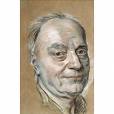
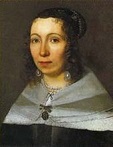

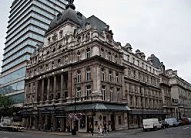


1705 On May 5 HRE (since 1658) Leopold I (b. 1640) dies in Vienna, and is succeeded by his well-educated liberal anti-Jesuit son Joseph I (1678-1711), who grants privileges to the Protestants in his dominions, esp. in Silesia; a Bavarian revolt against Austrian admin. is suppressed; meanwhile the allies attack Spain from the E and W, capturing Barcelona and reaching Madrid, where they proclaim Leopold I's 2nd son Archduke Charles as king of Spain; too bad, the Spanish people want non-Hapsburg Philip V instead, and rise against the allies, driving them out with French help. In Sept. the Hungarian Diet elects Francis II Rakoczy as ruler of the kingdom of Hungary, assisted by a 24-member Senate, and on Oct. 27 after encouragement by Britain and Netherlands, they begin peace talks with the Austrian emperor, but hang up on sovereignty for Transylvania. The Astrakhan Revolt of archers against Peter the Great's Westernization program begins (ends 1706). On Nov. 18 John Churchill, 1st Duke of Marlborough is appointed prince of Mindelheim in Uterallgau, Bavaria by HRE Joseph I (until 1713). The Whigs score big Vs in the election (the Whig Junto), and both Godolphin and Marlborough ally with them, but the queen is reluctant to replace Tory ministers, keeping the cabinet from going Whig until 1708. Scotland proposes a treaty with England. Nice is captured by the French. If you're black you'll have that feeling in the air this year, Or, Do surround yourself with yourself? Va. outlaws mixed-race marriages, defining a "mulatto" as "the child of an Indian and the child, grand child, or great grand child, of a negro"; New York City declares the death penalty for runaway slaves. The Dutch abandon Mauritius - the monkeys are upset with that? The Husaynid Dynasty in Tunisia (ends 1957) is founded by Al-Husayn I ibn Ali al-Turki (1669-1740), who overthrows the Ottoman dey of the Muradid Dynasty. Queen Anne knights Isaac Newton (1643-1727), who becomes the first Brit knighted for scientific achievement - if his wife were Gwyneth Paltrow they could name their kid Sir Apple? J.S. Bach walks 200 mi. to Lubeck to hear the Abendmusiken, dir. by Dietrich Buxtehude, but doesn't want his job since he requires him to marry his daughter. John Toland coins the term "pantheism" for the doctrine that all manifestations of the self-existing Universe are God. Architecture: Blenheim Palace in Woodstock, Oxfordshire, England, designed by Kit-Cat-loving playwright-turned-architect Sir John Vanbrugh (1664-1726) and architect Nicholas Hawksmoor (1661-1736) for John Churchill, 1st Duke of Marlborough is begun (finished in 1722), later becoming the birthplace of Winston Churchill and the reddish-brown spotted white toy Blenheim spaniel. The Queen's Theatre in Haymarket, Westminster, West End, London (cap. 1,216) opens as an opera house, designed by Sir John Vanbrugh, who produces 25+ operas by George Frideric Handel by 1739; in 1714 on the accession of George I it becomes the King's Theatre, followed in 1837 by Her Majesty's Theatre, His Majesty's Theatre in 1901, and Her Majesty's Theate in 1952. The Royal Observatory in Berlin, Germany is founded by Gottfried Wilhelm von Leibniz; it gets its first actual observatory in 1711. Science: English astronomer Edmond (Edmund) Halley (1656-1742) predicts the arrival in 1758 of the comet last seen in 1682, becoming one of the biggest coups of scientists over theologians of all time?; why couldn't superbrain Isaac Newton do it first? Robert Hooke discovers the 1/2-min. limit of human visual acuity. Nonfiction: Mary Astell (1666-1731), The Christian Religion as Profess'd by a Daughter of the Church of England. Pierre Le Pesant, Sieur de Boisguillebert, Factum de la France (1705-6); proposes the stimulation of consumption and production of commodities, a uniform tax on all revenue from property, and the abolition of imposts and internal duties. Samuel Clarke (1675-1729), Evidences of Natural and Revealed Religion. Robert Hooke (1635-1703), Posthumous Works; incl. General Scheme, explaining his use of Francis Bacon's scientific methods (empiricism over rationalism). John Law (1671-1729), Money and Trade Considered, with a Proposal for Supplying the Nation with Money; proposes the Real Bills Doctrine, that a bank should issue notes only in the discount of "good bills" at not more than 60-day due dates to prevent collapse, which is "thoroughly discredited" in 1945. Maria Sibylla Merian (1647-1717), Metamorphosis Insectorum Surinamensium; her 1699-1701 trip to Surinam to study Nature, making her the first person "to plan a journey rooted in science"; uses indigenous names for plants, and produces a classification of butterflies and moths that survives to modern times, becoming the first Euro to describe army ants and leaf cutter ants; contains a famous pictorial description of the metamorphosis of the butterfly, making her a star and making a fan of Peter I the Great. Adriaan Reland (Hadriani Relandi (1676-1718), De Religione Mohammedica Libri Duo; first Euro work that attempts to describe Islam objectively, by a Dutch scholar who toured Palestine in 1695. Christian Thomasius (1655-1728), Fundamenta Juris Naturalis et Gentium. Art: Sebastiano Ricci, Venus and Adonis (1705-6). Music: Prosper Jolyot de Crebillon (1674-1762), Idomnee. Francesco Gasparini (1661-1727), Ambleto (opera) (Venice); first opera about Hamlet; Missa Canonica; performed by J.S. Bach in 1740 in St. Thomas Church and St. Nicholas Church in Leipzig. Georg Friedrich Handel (1685-1759), Almira, Konigin von Castilien (HWV 1) (first opera) (Hamburg) (Jan. 8) (20 perf.); libretto by Giulio Pancieri; big hit, launching his 4-decade opera career of Italian Baroque-inspired music. Reinhard Keiser (1674-1739), Der Romische Unruhe oder Die Edelmutige Octavia (opera) (Hamburg). Die Kleinmutige Selbst-Morderin Lucretia oder Die Staats-Torheit des Brutus (opera) (Hamburg). Plays: Susanna Centlivre (1667-1723), The Gamester (comedy); big hit; The Basset Table (4 perf.); gains her access to the highest lit. circles, incl. Colley Cibber (1671-1757), Richard Steele, George Farquhar (1677-1707), and Nicholas Rowe (1674-1718). Peter Anthony Motteux (1663-1718), The Amorous Miser; or, the Younger the Wiser; Arsinoe, Queen of Cyprus. Ned Ward, Hudibras Redivivus. Sir Richard Steele (1672-1729), The Tender Husband (comedy). Sir John Vanbrugh (1664-1726), The Confederacy (comedy). Poetry: Joseph Addison (1672-1719), The Campaign. Bernard de Mandeville (1670-1733), The Grumbling Hive, or Knaves Turn'd Honest. Novels: Dimitrie Cantemir (1673-1723), Historia Hieroglyphica; first Romanian language novel; represents the Wallachian ruling houses of Brancoveanu and Cantacuzino by mythological beasts. Births: French explorer Jean-Baptiste Charles Bouvet de Lozier (d. 1786) on Jan. 14. French architect Jacques-Francois "le Petit" Blondel (d. 1774) on Jan. 17 in Rouen; grandson of Francois "le Grand" Blondel (1617-86). Italian castrato singer Farinelli (Carlo Maria Michelangelo Nicola Broschi) (d. 1782) on Jan. 24 in Andria (Apulia); brother of opera composer Riccardo Broschi. Swedish naturalist ("Father of Ichtyology") Peter Artedi (d. 1735) on Feb. 22 in Angermanland. Scottish jurist William Murray, 1st Earl of Mansfield (d. 1793) on Mar. 2 in Scone, Perthshire; educated at Westminster School, and Christ Church, Oxford U.; abolishes slavery in England in 1772. Portuguese dramatist (Jewish) Antonio Jose "the Jew" da Silva (d. 1739) on May 8 in Rio de Janeiro; emigrates to Portugal at age 8. English philosopher-physiologist David Hartley (d. 1757) on June 21 in Armley (Halifax), Yorkshire; educated at Jesus College, Cambridge; father of David Hartley Jr. (1732-1813); father of the Associationist School of Philosophy. Austrian Seven Years' War field marshal Count Leopold Josef (Joseph) von Daun, Prince of Thiano (d. 1766) on Sept. 24 in Vienna; son of Count Wirich Philipp von Daun (1669-1741). English statesman Henry Fox, 1st Baron Holland of Foxley (d. 1774) on Sept. 28 in Chiswick; son of Sir Stephen Fox (1627-1716) and 2nd wife Christiana Hope; husband of Lady Caroline Georgiana Lennox; father of Stephen Fox, 2nd Baron Holland (d. 1774), Charles James Fox (1749-1806), and Henry Edward Fox (1755-1811); grandfather of Henry Richard Vassall, 3rd Baron Holland (1773-1840); educated at Christ Church, Oxford U.; squanders his inheritance then gains the backing of a woman of fortune and returns to society as a MP - a fox smells his own den first? Italian pope (1769-74) Clement XIV (Giovanni Vincenzo Antonio Ganganelli) (d. 1774) on Oct. 31 in Santarcangelo di Romagna; educated by the Jesuits, but ends up suppressing them due to political pressure. English historian Thomas "Tom" Birch (d. 1766) on Nov. 23 in Clerkenwell; of Quaker parents, which doesn't stop him from being ordained in the Church of England in 1730; known for going fishing dressed up as a tree to fool them? English poet David Mallet (d. 1765). English military commander Earl Loudoun (d. 1782). Deaths: French courtesan-writer Ninon de L'Enclos (b. 1620) on Oct. 17 in Paris; leaves money for 9-y.-o. Francois Marie Arouet (son of her accountant) (later Voltaire) to buy books: "Much more genius is needed to make love than to command armies." German duke Georg Wilhelm of Brunswick-Luneburg-Hanover (b. 1624). English naturalist John Ray (b. 1627). French Jesuit missionary Louis Hennepin (b. 1626) in Rome, Italy. Am. Puritan minister Michael Wigglesworth (b. 1631). Italian painter Luca Giordano (b. 1634) on Jan. 3 in Naples. German pietist theologian Philipp Jakob Spener (b. 1635) on Feb. 5. French ballet choreographer Pierre Beauchamp (b. 1636). English queen Catherine of Braganza (b. 1638) on Dec. 31 in Portugal. Austrian HRE (1658-1705) Leopold I (b. 1640) on May 5. English Popish Plot conspirator Titus Oates (b. 1649) on July 12/13. French fairy tale writer Madame d'Aulnoy (b. 1650) on Jan. 4. German Bible translator Ernst Gluck (b. 1654) in Moscow; deported there from Latvia by the Russians in 1702, losing the mss. of his new Russian trans. of the Bible. Swiss mathematician Jacob Bernoulli (b. 1655) on Aug. 16 in Basel ; his tombstone bears the inscription of his beloved logarithmic spiral - the good spiral young? Hungarian anti-Hapsburg leader Count Imre Thokoly (b. 1657) on Sept. 13 in Nicomedia. French physicist Guillaume Amontons (b. 1663) on Oct. 11 in Paris. Prussian queen Sophie Charlotte (b. 1668) on Feb. 1.

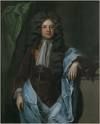
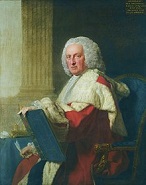

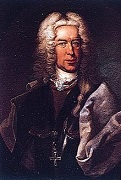





1706 On Feb. 3 Charles XII of Sweden defeats the Russians and Saxons at the Battle of Franstadt in Saxony. On Feb. 7 new viceroy of New Spain (since Nov. 27, 1702) Francisco Fernandez de la Cueva (Cuervo) Enriquez, Marques de Cuellar, 10th Duke of Alburquerque (1666-1724) Albuquerque (Villa of San Francisco de Alburquerque) (modern-day pop. 560K/1.7M), and stocks it with 12 families, writing the viceroy about it after the fact, breaking Spanish law requiring permission, and lying that there are the required min. of 35 families; he is called to Mexico City for punishment, and loses his planned appointment as permanent gov., having to leave in 1711; the villa later becomes known as "Duke City"; in 1988 the city council declares "Founder's Day" in Albuquerque's honor, complete with a statue; since the Spanish have less than 60 soldiers to guard all the settlers and their farms, they relocate their homes into a single square, creating the Old Town Plaza for mutual defense, Mexico's first?; Albuquerque is incorporated in 1891. In Feb. after having had enough of the pesky Scots, Queen Anne appoints commissioners to effect a union between England and Scotland, and they meet at Westminster for several mo., then present the Treaty of Union to the parliaments of both countries for ratification, proposed by Charles Montagu, 1st Earl of Halifax (1661-1715), and backed by Archibald Campbell, 3rd Duke of Argyll, 1st Earl of Ilay (1682-1761); compensation for Darien is incl.; on June 28 the Scottish parliament meets in Edinburgh and agrees to it on July 22, then waffles until Queen Anne bribes them in Nov. to go with it, with new peerages granted, plus trading privileges to the burgesses, plus rights of the kirk to mollify the clergy; the pop. knows they're being sold out and shows it, causing the queen to send an English army to the Scottish border. On May 23 British, Dutch and Danish forces under the Duke of Marlborough defeat the French under Gen. Villeroy at the Battle of Ramillies in Brabant, Belgium (13 mi. N of Namur), followed by the submission of Brussels, Antwerp, Ghent, Ostend et al., giving the Spanish Netherlands to the allies and driving the French back to their border defenses. On July 10 Grace Sherwood (1660-1740) of Pungo, Va., a midwife who sometimes wears men's clothes and is known as the "Witch of Pungo" and is accused of causing a miscarriage through her witchy woman powers is dropped into the Lynnhaven River, and floats, proving that she is guilty because the pure water cast out her evil spirit; she is then jailed until 1714, when she pays back taxes and with the help of Gov. Alexander Spotswood reclaims her property, living quietly until her death; on July 11, 2006 Gov. Timothy M. Kaine of Va. pardons her before a reenactment of her river drop in Virginia Beach, Va. On Sept. 7 after Gen. Vendome is recalled, 20K French troops are routed by troops of Savoy led by Duke Amadeus II and Prince Eugene under the walls of Turin, and they go on to occupy Milan and force the French out of Lombardy and Italy; Charles III is proclaimed at Milan; Austrian field marshal Count Wirich Philipp von Daun (1669-1741) becomes a hero for his defense of Turin. On Sept. 24 the Treaty of Altranstadt (Altranstädt) (in Prussian Saxony near Mereburg) with Sweden forces Augustus II to renounce the Polish crown in favor of Stanislaus I. On Oct. 3 the 227-member 1-chamber Scottish Parliament convenes, and the main item on the agenda is ratifying the Acts of Union with Britain; in Nov. James Hamilton, 2nd Baron Belhaven and Stenton (1656-1708) gives a big speech against union; too bad, after plenty of baksheesh is handed out, enough of the 117 dissenting members flip-flop - I can't go on but the Scottish nobles do it again and sell out their own people to go Norman? In Nov. S.C. adopts Anglicanism as its official religion. On Dec. 9 king (since Sept. 12, 1683) Pedro II (b. 1648) dies, and his son Joao (John) V "the Magnificent" (1689-1750) becomes Braganza king of Portugal (until July 31, 1750), beginning a 44-year reign as the gold flows in from Brazil, allying with England in the War of the Spanish Succession and raising Portugal's prestige, aggressively expanding in the Americas and India, becoming known as the Portuguese Sun King. Guido Wald Rudiger (Rüdiger), Count of Starhemberg (1657-1737) cousin of Gen. Ernst Rudiger von Starhemberg (b. 1701) is appointed CIC of the Hapsburg imperial army in Hungary, fighting the pesky insurgents led by Francis II Rakoczi; in 1708 he becomes CIC of the Austrian army in Spain. Archduke Charles conquers Madrid, but loses it after a short time. Thommo Reachea II becomes king of Cambodia for the 2nd time (until 1710). Charleston, S.C. successfully beats off a French-Spanish attack. Sophia Dorothea, princess of Brunswick marries Friedrich Wilhelm. Irish-born missionary Francis Makemie (1658-1708) (who arrived in Md. in 1683) founds the first presbytery in North Am., becoming the founder of U.S. Presbyterianism - I won't join, so make me? G.F. Handel travels from Hamburg to Italy at the invitation of Gian Gastone de' Medici, and meets his musician brother Ferdinando de' Medici, then finds that the pope has temporarily banned opera, causing him to compose sacred music and cantatas until next year. The first life insurance office in England is opened. White Horse Tavern in Newport, R.I. (built 1652) becomes the first to host a businessman's lunch after city councilors begin dining there and charging expenses to the city. Coffee trees are sent from Sri Lanka to Amsterdam, breaking the ancient Arab monopoly. The word "ain't" is invented as a contraction of "am not". The remains of the buried city of Herculaneum (destroyed in 79 C.E.) are discovered 40-100 ft. below the surface in Portici and Resina villages in the suburbs of Naples during the digging of a well; systematic excavations begin in 1738, uncovering a papyrus library and art relics, incl. statues of Aeschines, Agrippina, the Sleeping Faun, the Six Actresses, Mercury, the Satyr group, and busts of Plato, Scipio Africanus, Augustus, Seneca, and Demosthenes, which are put on display at the Nat. Museum in Naples. The Evening Post, the first evening newspaper begins pub. in London. Architecture: The Berliner Stadtschloss royal palace in Berlin (begun 1698) is completed; demolished in 1950 by the East German govt. as a symbol of "Prussian militarism". Filippo Juvara designs the Church of La Superba (Church of the Proud) in Turin. Governor's Place in Williamsburg, Va. is begun (finished 1720), based on the newly-built Nether Lypiatt Manor in Gloucester, England; after the Va. capital is relocated to Richmond in 1780, it burns down on Dec. 22, 1781 while being used as a hospital for Am. Rev. soldiers from the Siege of Yorktown. The Second Eddystone Lighthouse is built off Plymouth, England. Inventions: English inventor Henry Mill invents carriage springs. Music: Reinhard Keiser (1674-1739), Die Neapolitanische Fischer-Emporung oder Masianello Furioso (opera) (Hamburg). Isaac Watts (1674-1748), Horae Lyricae. Nonfiction: Johann Michael Faust (1663-1707), Compendium Alchymist. Novum, Sive Pandora Explicata & Figuris Jllustrata. This is, the noblest gift of God, or a golden treasure, with which the old and new philosophi, the imperfect metal, have improved by the force of fire, and have driven away all sorts of harmful and unserious diseases, inwardly and externally, by their choking reprint of "Pandora" ed. Hieronymus Reusner, 1582. John Kersey the Younger, The New World of English Words (rev. ed); incl. the definition "Anthropology, a Discourse or Description of Man, or of a Man's Body." John Locke (1632-1704), Of the Conduct of the Understanding. Cotton Mather (1663-1728), The Negro Christianized; The Good Old Way (Puritanism?). Giovanni Battista Morgagni (1682-1771), Adversaria Anatomica. John Philips (1676-1709), Cerealia. Olous Romer, Catalog of Astronomical Observations. Matthew Tindal (1657-1733), Rights of the Christian Church. Plays: Susanna Centlivre (1667-1723), Love at a Venture; Colley Cibber disses the play as too bawdy, then plagiarizes it for his "The Double Gallant". George Farquhar (1677-1707), The Recruiting Officer (comedy) (Drury Lane, London); English officers Plume and Brazen (Colley Cibber) recruit soldiers for the War of the Spanish Succession in Shrewbury; big hit; first play to be staged in New York City (Dec. 6, 1732). Nicholas Rowe (1674-1715), Jane Shore. Sir John Vanbrugh (1664-1726), The Mistake (comedy). Novels: Daniel Defoe (1659-1731), A Relation of the Apparition of Mrs. Veal. Births: Am. diplomat-scientist-inventor-postmaster-printer-icon, Founding Father, and U.S. postmaster gen. #1 (1775-6) ("America's Renaissance Man") ("America's First Internat. Celebrity") (Freemason) (lefty) (nudist) (face on the U.S. $100 bill) Benjamin Franklin (d. 1790) on Jan. 17 (Jan. 6 Old Style) in Boston, Mass.; 10th child of an English immigrant soap and candlemaker (youngest of 10 sons); his parents have 17 children; inventor of crop insurance; a couple of decades older than the other Founding Fathers; brother of Jane Franklin Mecom (1712-94); husband (1730-) of Deborah Read (1708-74); father of William Franklin (1731-1813), Francis Folger Franklin (1732-6), and Sarah Franklin "Sally" Bache (1743-1808); first to suggest Daylight Savings Time. English publisher and type designer John Baskerville of Birmingham (d. 1775) on Jan. 28 in Wolverley (near Kidderminster). British adm. Sir George Pocock (d. 1792) on Mar. 6 in Chieveley, Berkshire. French playwright-librettist (Freemason) Louis de Cahusac (d. 1759) on Apr. 6 in Mauntauban; collaborator of Jean-Philippe Rameau (1683-1764). English optician (inventor of the achromatic lens) John Dollond (d. 1761) on June 10 in Spitalfields, London; Huguenot refugee father. Viennese composer Baldassare Galuppi ("Il Buranello") (d. 1785) on Oct. 18. French mathematician-physicist Gabrielle Emilie Le Tonnelier de Breteuil, Marquise du Chatelet (Châtelet) (Chastellet) (d. 1749) on Dec. 17. English highwayman Dick Turpin (d. 1739). Indian sage ("the silent sage") Thayumanavar (d. 1744). German sculptor and porcelain designer Johann Joachim Kandler (d. 1775). Portuguese architect Mateus Vicente de Oliveira (d 1786); pupil of Joao Frederico Ludovice and Jean Baptiste Robillon. Deaths: English gardening writer John Evelyn (b. 1620) on Feb. 27 in Dover St., London. German painter Michael Willmann (b. 1630) on Aug. 26 in Leubus, Poland. French Huguenot scholar Pierre Bayle (b. 1647) on Dec. 28. Portuguese king (1683-1706) Pedro II (b. 1648) on Dec. 9 in Alcantara. English Methuen Treaty diplomat-judge John Methuen (b. 1650) on July 2 in Lisbon, Portugal; buried in Westminster Abbey. German Baroque organist-composer Johann Pachelbel (b. 1653) on Mar. 3 in Nuremberg; leaves Canon in D, which is not rediscovered until 1919. French explorer Pierre Le Moyne d'Iberville (b. 1661) on July 9 in Havana, Cuba (yellow fever). Moravian Jesuit missionary Georg Joseph Kamel (b. 1661) on May 2 in Philippines; namesake of the camellia.









1707 On Mar. 1 after English Tory MP Charles Davenant (1656-1754) is appointed secy. of a commission to negotiate a union of Scotland and England in Sept. 1702, under pressure and bribes the Scottish Parliament votes itself out of existence; on Mar. 25 it adjourns for the last time until ?, 1998. On Mar. 3 Muslim Mughal emperor (since 1658) Aurangzeb (b. 1618) dies after reigning 48 years and 215 days (2nd longest after Akbar the Great) and his eldest son Muhammad Azam Shah (Abu'l Faaiz Qutb-ud-Din Muhammad Azam) (1653-1707) becomes Mughal emperor #7; too bad, he and his two sons Sultan Muhammad Bidar Bakht and Shahzada Wala Jah Bahadur are defeated by Azam Shah's elder step brother Prince Shah Alam (Qutb ud-Din Muhammad Mu-azzam), and Azam Shah is executed on June 8, and on June 19 Shah Alam is crowned Bahadur (Pers. "brave hero") Shah I (1643-1712), Mughal emperor #8 of Hindustan (N India) (until Feb. 27, 1712); the empire is at its zenith, covering 1.25M sq. mi. and 150M subjects, 25% of world pop.; it now begins its decline. On May 1 under Queen Anne (1665-1714) (now queen of Great Britain and Ireland instead of queen of England, Scotland, and Ireland), with the backing of lord high treasurer (1702-10) Sidney Godolphin, the Act of Union (Union with England Act) is passed, fixing the problem of Scotland being omitted from the Act of Succession, and joining Scotland, England, and Wales to create the United Kingdom of Great Britain (U.K.); the word "Celt" first appears in English in connection with the Act of Union, with Welsh (Gaelic) (Celtic) speakers prohibited from holding govt. offices; Scotland is given 16 peers and 45 members of the House of Commons in the British Parliament, free trade with England, and allowed to keep its local legal, political and ecclesiastical institutions, but cannot create any more Scottish peers; many Scots consider it a sell-out, but it gives backwater Scotland access to England's global marketplace, causing an economic and cultural boom, so that by the middle of the cent. the new prosperity it engenders reconciles many, esp. in Glasgow in W Scotland (50 mi. W of Edinburgh on the Clyde River), which is given equal freedom of trade with English ports and soon obtains a large share of the Am. trade, becoming the main center of the tobacco trade until the Am. Rev., then going into cotton manufacture and the sugar trade, shipbuilding and iron, and growing into Scotland's largest city; the economic boom triggers the Scottish Enlightenment, which becomes the basis of classical liberalism, and produces thinkers Francis Hutcheson, Adam Smith, and David Hume, plus steam engine inventor James Watt, along with a dem. education system that is later exported to the U.S. On Apr. 25 the French under James II's son the duke of Berwick (who became a French subject in 1702 and was created a marshal of France) allied with the Spanish crush the Portuguese and British at the Battle of Almansa (Almanza) in Spain, securing the throne for Philip V and getting Berwick created a French peer by Louis XIV and duke of Liria and Xerica by Philip V; Jean Cavalier and his Camisards fight on the British side, and when they find themselves facing a Roman Catholic French regiment, they throw down their guns and rush at them to attack them with blades street-style, after which Cavalier writes "I fought as long as a man stood beside me and until numbers overpowered me, losing an immense quantity of blood from a dozen wounds"; driven out of the Languedoc, the remaining Camisards flee to Geneva and London, where Sir Isaac Newton takes a shine to them, probably for their gnostic beliefs; Cavalier takes refuge in Dublin, then ends up as lt. gov. of N.J. in 1735-8, getting promoted to maj.-gen. in the British army before croaking in 1740. On May 1 the Union Jack becomes the new flag of the U.K.; it consists of the English flag of St. George, the Scottish flag of St. Andrew, and the Irish flag of St. Patrick all superimposed - is it there in your heartache, waiting for some beautiful body, I don't seem to recognize ya? On June 13 the Hungarian Diet in Onod declares the Hapsburgs deposed from the Hungarian throne; too bad, Louis XIV of France refuses to ally with them, leaving them no options except alliance with Russia, which also snubs them. On Sept. 30 the Austrians under field marshal Count Wirich Philipp von Daun conquer Gaeta in C Italy. The Man in the Iron Mask is really the Man in the Velvet Mask? On Nov. 19 Eutache Dauger (1640-1703) AKA the Man in the Iron Mask (L'Homme au Masque de Fer), who had been a prisoner in the Bastile since 1679 (arrested in Dunkirk in 1669, perhaps after returning from exile in Canada) while forced to wear a velvet mask and remain silent on any subject other than his day-to-day needs dies; later novelist Alexandre Dumas changes the mask to iron and claims he is either Louis XIV himself or his twin brother; others believe he is Louis XIV's true father, who resembles him too much (Louis XIII didn't resemble his supposed son); he is buried under the name of Eustache Dauger, valet. On Dec. 16 after Osaka suffers a violent earthquake on Nov. 11, Mt. Fuji (Fujiyama) erupts, pouring lava and ashes into Edo 60 mi. away, but there are no fatalities, becoming its last eruption until ?. Prussia and Sweden sign a Perpetual Alliance. Charles XII and Stanislas I come to an understanding with Cossack hetman Ivan Stepanovich Mazepa (1639-1709) concerning the Ukraine. The Scottish Darien Colony in Panama (founded 1695) collapses, with 2K Scots killed and all moneys invested lost, ruining many thousands of families, which increases anti-English feeling in Scotland and results in riots; the collapse of the Scottish economy leads to more discussions of full parliamentary union with England. The British colonize Acadia in E Canada. The Society of Antiquaries of London, forced underground during the reign of James I begins meeting publicly again, receiving a royal charter in 1751. G.F. Handel meets with Domenico Scarlatti in Venice. Presbyterian preacher Francis Makemie (1658-1708) is imprisoned for preaching in New York City by Gov. Cornbury, tried, and acquitted - can't makemie stop? Gottfried Silbermann (1683-1753) builds his first organ at Frauenstein, Saxony. Billiards begins to be played in Berlin coffeehouses. Fortnum & Mason is founded in Piccadilly, London by William Fortnum and Hugh Mason as a grocery store to make and sell jams, teas and sauces, going on to become a favorite of Queen Victoria, whom they supply annually with Christmas puddings, causing them to adopt the motto "Food Fit for a Queen" before evolving into a dept. store that stocks exotic items. Architecture: Fischer von Erlach finishes the Kollegien-Kirche in Salzburg (begun 1696). Inventions: The West finally catches up to the East where it hurts? German alchemist Johann Friedrich Bottger (Böttger) (1682-1719) of Dresden, Germany, with royal patronage and aided by Count Ehrenfried Walther von Tschirnhaus (1651-1708) discovers the secret of "hard" porcelain similar to Chinese, developing a hard, reddish porcelain which becomes known as Dresden or Meissen China; in 1708 Bottiger is appointed dir. of new factories in Dresden, which he moves to Meissen in 1710, where he invents white porcelain in 1715; too bad that disloyal workers soon spread his secrets all over Europe? French engineer Denis Papin invents the high-pressure boiler. Science: English physician Sir John Floyer (1649-1734) introduces pulse rate as a medical diagnostic measure - flow rate of his johnson jokes here? German chemist-physician Georg Ernst Stahl (1659-1734) pub. the alchemy-influenced Phlogiston Theory of Combustion, which it takes Antoine-Laurent Lavoisier until 1783 to phlog out of fashion. Nonfiction: Anon., The Principles and Duties of Christianity; the first book printed in Manx, which was a purely spoken language until 1610. Bernardino Baldi (1533-1617), Cronica dei Matematici. ? Chamberlayne, State of England; mentions cricket. Anthony Collins (1676-1729), An Essay Concerning the Use of Reason. William Fleetwood (1656-1723), Chronicum Preciosum: Or, An Account of English Money, the Price of Corn and Other Commodities, for the Last 600 Years (London); first calculation of a cost-of-living index, finding that £5 in 1440 would buy the same as £28-£30 then; cited by Adam Smith in "The Wealth of Nations" (1776). Samuel Fritz (1654-1728), Map of South America; by a Bohemian-born Jesuit who explored the interior. Edward Lhuyd (1660-1709), Archaeologica Britannica. John Mill (1645-1707), Novum testamentum græcum, cum lectionibus variantibus MSS. exemplarium, versionum, editionum SS. patrum et scriptorum ecclesiasticorum, et in easdem nolis (Ocford); pub. after 30 years of work, documenting over 30K discrepancies between 100 extant New Testament mss., shocking the Christian world that had relied on Erasmus' 1516 Textus Receptus; dies of a stroke 2 weeks after pub. Georg Ernst Stahl (1659-1734), The True Theory of Medicine (Theoria Medica Vera); advances the Phlogiston Theory of Combustion. Jonathan Swift (1667-1745), A Tritical Essay upon the Faculties of the Mind; "The Mind of Man is at first (if you will pardon the Expression) like a Tabula rasa, or like Wax, which while it is Soft is capable of any Impression, 'till time has hardened it"; "Laws are like Cobwebs which may catch small Flies, but let Wasps and Hornets break through. But in Oratory the greatest Art is to hide Art"; "There is nothing in this World contant but inconstancy"; "For Men nowadays Worship the Rising Sun, and not the Setting." James Woodward, The Sea-Man's Vade Mecum (London). Music: Joseph Addison (1672-1719), Rosamond (opera). G.F. Handel (1685-1759), Dixit Dominus; Rodrigo (opera) (Florence); original title "To overcome onself is the greater victory"; libretto based on Francesco Silvani's "Il Duello d'Amore e di Vendetta". Reinhard Keiser (1674-1739), Der Angenehme Betrug oder Der Carneval von Venedig (opera) (Hamburg). Agostino Steffani (1653-1728), Arminio (opera) (Dusseldorf). Isaac Watts (1674-1748), Hymns and Spiritual Songs (2 vols.) (1707-9); incl. Alas! And Did My Savior Bleed?, Marching to Zion, Come, Holy Spirit, Heavenly Dove, and When I Survey the Wondrous Cross. Art: Claude Gillot (1673-1722), Les Deux Carrosses. Plays: Susanna Centlivre (1667-1723), The Platonick Lady; the printed vers. has a preface dissing sexism. Prosper Jolyot de Crebillon (1707-77), Atree el Thyeste. George Farquhar (1677-1707), The Beaux' Stratagem (comedy) (Theatre Royal, Haymarket, London) (Mar. 8); Archer and Aimwell hatch a scheme to visit small towns and entrap young heiresses; too bad, in the first town, Lichfield, Aimwell is entrapped by Dorinda; landlord Boniface causes the term "boniface" to be coined for an innkeeper or tavernkeeper; Farquhar dies on Apr. 29. Alain-Rene Lesage (1668-1747), Le Diable Boiteux. Peter Anthony Motteux (1663-1718), Thomyris, Queen of Scythia. Poetry: Anon., Complete Tang Poetry; a Qing dynasty production. Elijah Fenton (1683-1730), Oxford and Cambridge Miscellany Poems. Births: French novelist Claude Prosper Jolyot de Crebillon (Crébillon) (d. 1777) on Feb. 13 in Paris; son of Prosper Jolyot de Crebillon (1674-1762). Italian "Amalasunta" dramatist-librettist ("Founder of Modern Italian Comedy") Carlo Osvaldo Goldoni (AKA Polisseno Fegeio, Pastor Arcade) (d. 1793) on Feb. 25 in Venice. Am. Rev. leader (DOI signer) Stephen Hopkins (d. 1785) on Mar. 7 in Scituate, Providence, R.I.; brother of Esek Hopkins (1718-1802). Prussian gen. Hans Karl von Winterfeldt (d. 1757) on Apr. 4 in Vanselow Castle, Swedish Pomerania. English "Tom Jones" novelist Henry Fielding (d. 1754) on Apr. 22 near Glastonbury, Somersetshire. Swiss #1 mathematician (greatest of the 18th cent.?) Leonhard Paul Euler (d. 1783) on Apr. 15 in Basel; known for being a memory whiz. Swedish botanist ("Father of Taxonomy") Carl Linnaeus (Carl von Linne) (Carl von Linné) (Carolus Linnaeus) (d. 1778) on May 23 in Rashult, Smaland. British gen. John Forbes (d. 1759) on Sept. 5 in Dunfermline, Fife, Scotland. French "Histoire Naturelle" scientist ("Father of Natural History") Georges-Louis Leclerc, Comte de Buffon (d. 1788) on Sept. 7 in Montbard, Burgundy. English Methodist "Hark, the Herald Angels Sing" hymn writer Charles Wesley (d. 1788) on Dec. 18 in Epworth, Lincolnshire; son of Samuel Wesley the Elder (1662-1735); brother of John Wesley (1703-91). Am. historian Rev. William Stith (d. 1755). French dancer Marie Salle (d. 1756). Hessian gen. Leopold Philip de Heister 9d. 1777). French gen. Claude Louis, Comte de Saint-Germain (d. 1778); not to be confused with the Count of St. Germain (1712-84). Deaths: Italian mathematician Paolo Casati (b. 1617). Indian Mughal emperor #6 (1658-1707) Aurangzeb (b. 1618) on Mar. 3 in Ahmednagar. French painter Noel Coypel (b. 1628) on Dec. 24. English mathematician-astronomer Richard Towneley (b. 1629) on Jan. 22 in York. French Benedictine scholar Jean Mabillon (b. 1632) on Dec. 27 in Paris. Dutch painter Willem van de Velde the Younger (b. 1633). French fortifications engineer Sebastien Vauban (b. 1633) on Mar. 30. Danish composer Dietrich Buxtehude (b. 1637) on May 9. French mistress (of Louis XIV) Francoise Athenais, Marquise de Montespan (b. 1641) on May 27 in Bourbon-l'Archambault; leaves Memoirs. English theologian John Mill (b. 1645) on June 23 in Oxford; dies 2 weeks after pub. of his masterpiece on the Greek New Testament. German musical instrument maker Johann Christoph Denner (b. 1655) on Apr. 26 in Nuremberg. German gen. Louis William, Margrave of Baden-Baden (AKA Turkenlouis) (b. 1655) on Jan. 4 in Rastatt. French opera singer Julie d'Aubigny (b. 1670) in Provence. Italian composer Giuseppe Aldrovandini (b. 1671) on Feb. 9 in Bologna. English composer Jeremiah Clarke (b. 1674) on Dec. 1 in London (suicide); shoots himself over an unattainable woman. English playwright George Farquhar (b. 1678). English dean of St. Paul's (1691-1707) William Sherlock (b. 1641) in June in Hampstead.


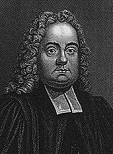

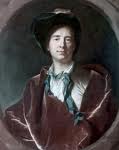
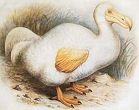
1708 By this year blacks outnumber whites in Carolina, a first for a British Am. colony. In Feb. after the 1708 ed. of "Merlinus Almanac" by famous astrologer John Partridge (1644-1714) sarcastically refers to the Church of England as "the infallible Church", pissed-off Jonathan Swift pub. Predictions for the Year 1708, by Isaac Bickerstaff as an elaborate April Fool's joke to discredit him by predicting his death on Mar. 29, following on that date with a letter containing the soundbyte: "Here five foot deep lyes on his back/ A cobbler, starmonger, and quack.../ Who to the stars in pure good-will,/ Does to his best look upward still./ Weep all you customers that use/ His pill, his almanacks or shoes", after which Partridge pub. a pear, er, letter proclaiming that he's still alive, causing Swift to call it a fake as "they were sure no man alive ever to writ such damned stuff as this", causing a host of his enemies to keep the rumor alive for the rest of his life. I knew Jack Kennedy, pretender, and you're no Jack Kennedy, er, William Wallace? In Mar. "Old Pretender" James Francis Edward Stuart, Prince of Wales (1688-1766), son of James II/VII lands in Edinburgh, fails to mount a rebellion, and returns to France four days later after the French fleet assisting him is defeated - who wants to support a Scot king who uses the French spelling for his Scottish name Stewart? On July 11 British, Dutch, and Austrian forces under the Duke of Marlborough and Prince Eugene of Savoy defeat the French under Gen. Vendome and the Duke of Burgundy at the Battle of Oudenarde (Oudenaarde) in Belgium S of Dunkirk, breaking the French defense of the Spanish Netherlands; Lille surrenders after a siege; peace negotiations break down after the Allies demand that Louis XIV drive his pesky grandson from Spain with French troops. On Aug. 3 the Battle of Trencin (Trencsen) (Trentschin) in Slovakia is a V for the Hapsburg Austrians over the Hungarian Kuruc rebels after the horse of leader Francis II Frakoczy stumbles and knocks him unconscious, causing his forces to believe him dead and flee; the defeated Kuruc leaders transfer their allegience to the Austrian emperor in exchange for clemency, and Rakoczy's forces contract to Munkacs and Szabolcs. On Sept. 7 Persia signs a treaty with France, giving the French trading privileges and protecting French religious missions; trade remains a trickle. On Oct. 1 John Blow (b. 1649) dies, and his student William Croft (1678-1727) becomes organist of Westminster Abbey (until 1727), going on to compose works for the funeral of Queen Anne in 1714 and the coronation of George I in 1715. On Oct. 29 English Prince George (b. 1653) dies from asthma, leaving Queen Anne in "an unspeakable grief", and she lives on as a widow (until 1714), creating the Queen Anne Period in Britain, with unique arts, culture, and architecture, while keeping the Jacobites and Hanoverians from taking her throne; meanwhile many Scots can't get over that union thang. The British capture Minorca and Sardinia. Charles XII of Sweden invades Ukraine. The Austrians seize Mantua (until 1859), ending its independence. Robert Walpole becomes British secy. of war. Peter I the Great divides Russia into eight govt. districts. Britain passes the Naturalization Act, permitting Palatine Germans et al. to become British citizens. The British East India Co. and the New East India Co. are merged. The first German theater opens in Vienna. G.F. Handel goes to Rome and Naples. Tea consumption rises in England from £40K in 1699 to £240K this year. A professorship of poetry is established at Oxford U. Architecture: On Oct. 26 the new rebuilt St. Paul's Cathedral in London is topped-out by Christopher Wren's son Christopher Wren Jr; the figures of Gog and Magon on London's Guildhall destroyed in the Great Fire of 1666 are replaced. The Chapel des Invalides in Paris (begun 1680) is finished. Nonfiction: Jesuit missionaries produce the first accurate Western Map of China. Hermann Boerhaave (1668-1738), Institutiones Medicae; theory of inflammation. Jeremy Collier (1650-1726), The Ecclesiastical History of Britain (1708-14). Thomas Corneille (1625-1709), Dictionnaire Universel Geographique et Historique (3 vols.). Bernard de Fontenelle (1657-1757), Histoire du Renouvellement de l'Academie des Sciences (3 vols.) (1708, 1717, 1722); "Nothing proves more clearly that the mind seeks truth, and nothing reflects more glory upon it, than the delight it takes, sometimes in spite of itself, in the driest and thorniest researches of algebra." Matthew Henry (1662-1714), Exposition of the Old and New Testaments (6 vols.) (1708-10); makes fans of George Whitefield, Charles Spurgeon, and John Wesley. ? Leguat, Voyages et Aventures; a Huguenot refugee from Rodriguez Island describes the Solitaire (Didine Bird), a large bird, taller than a turkey (45 lb.), which flaps its wings as a weapon or to call its mate, and later goes extinct - what a Thanksgiving dinner that woulda made? Bernard de Montfaucon, Paleographia Graeca. John Oldmixon (1673-1742), The British Empire in America. Art: Sir James Thornhill (1675-1734), The Painted Hall at Greenwich Hospital (1708-27); depicts the succession of the Protestant monarchs from William III and Mary II to George I. Music: G.F. Handel (1685-1759), Der Begluckte Florindo (HWV 3) (opera) (Theater am Gansemarkt, Hamburg); libretto by Heinrich Hinsch; debuts after Handel leaves for Italy. Nicola Porpora (1686-1768), Agrippina (first opera) (Naples). Plays: Peter Anthony Motteux (1663-1718), Love's Triumph. Jean-Francois Regnard (1655-1709), Le Legataire Universal (comedy). Poetry: Ebenezer Cooke (1667-1732), The Sot-Weed Factor: Or, a Voyage to Maryland, a Satyr in which is describ'd the Laws, Governments, Courts and Constitutions of the Country; and also the Buildings, Feasts, Frolocks, Entertainments and Drunken Humours of the Inhabitants of that Part of America in Burlesque Verse; rev. 1731; the first Am. satire?; basis of John Barth's 1960 novel "The Sot-Weed Factor". John Gay (1685-1732), Wine. John Philips (1676-1709), Cyder (2 vols.); imitation of Virgil's "Georgics"; his masterpiece? Births: Italian Rococo painter Pompeo Girolamo Batoni (d. 1787) on Jan. 25 in Lucca; moves to Rome in 1727, where he becomes a favorite of Brits on the Grand Tour. Am. celeb Deborah Read (d. 1774) on Feb. 14; wife (1730-) of Benjamin Franklin (1706-90); mother of Francis Folger Franklin (1732-6) and Sarah Franklin "Sally" Bache (1743-1808). Swedish poet-satirist-historian Olof von Dalin (d. 1763) on Aug. 29 in Vinberg Parish, Halland Province; relative of Bishop Andreas Rydelius of Lund. Swiss scientist-theologian-poet Albrecht von Haller (d. 1777) on Oct. 16 in Berne. English statesman and PM (1766-8) ("the Great Commoner") (#1 British statesman of the 18th cent.) William Pitt the Elder, 1st Earl of Chatham (d. 1778) on Nov. 15 in Westmindson; grandson of Diamond Pitt, gov. of Madras, who founded the family fortune by selling a large diamond to Philippe II, duke of Orleans for £135K; father of William Pitt the Younger (1759-1806); educated at Eton School, and Trinity College, Oxford U.; created earl in 1766; known for the family ailment of gout. English actress Lavinia Fenton (Lavinia Paulet, Duchess of Bolton) (d. 1760). Austrian HRE (1745-65) (founder of the House of Hapsburg-Lorraine) Francis I (Francis Stephen, Duke of Lorraine) (d. 1765); husband of Maria Theresa; father of Marie Antoinette, Maria Louise (wife of Napoleon I), and Maximilian I of Mexico. English painter-illustrator Francis Hayman (d. 1776) in Exeter, Devon. French adm. Louis Guillouet, Comte d'Orvilliers (d. 1791) in Moulins, Allier; grows up in Cayenne, French Guina. Deaths: French Roman Catholic bishop Francois Xavier de Laval-Montmorency (b. 1623). German dramatist-poet Christian Weise (b. 1642) in Zittau. French architect Jules Hardouin-Mansart (b. 1646) on May 11. Norwegian #1 poet Peter Dass (b. 1648). English composer John Blow (b. 1649) on Oct. 1 in London; buried in Westminster Abbey. Swedish gen. Count Otto Vellingk (b. 1649). Danish-born English prince George of Denmark, duke of Cumberland (b. 1653) on Oct. 28 in Kensington Palace, London (asthma). Scottish nobleman John Hamilton, 2nd Lord Belhaven and Stenton (b. 1656) on June 21 in London; dies in prison after being accused of favoring a phantom French invasion. French botanist Joseph Pitton de Tournefort (b. 1656) on Dec. 28 in Paris; killed by a carriage on a road in the 5th Arrondissement that is later named Rue de Tournefort. Irish-born Am. Presbyterian leader Francis Makemie (b. 1658). Scottish mathematician David Gregory (b. 1659) on Oct. 10. Hungarian Kuruc leader Tamas Esze (b. 1666) on May 27 in Nyitra. Indian Sikh Guru Gobind Singh (b. 1666) on Oct. 7 in Nanded.


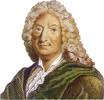
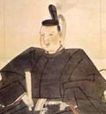
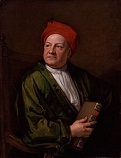

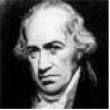


1709 Famine strikes Europe, esp. Prussia; the first mass emigration of 14K Germans from the Palatinate to North Am. begins; by 1800 100K Germans emigrate, followed by 5M more by 1900. On Jan. 5/6 after volcanic eruptions by Teide in the Canary Islands, Santorini in the E Mediterranean, and Vesuvius near Naples, combined with the Maunder Minimum of 1645-1715 leads to the perfect storm, the European Deep Freeze (Le Grand Hiver) of 1709 begins, freezing the entire continent from Italy to Scandinavia and England to Russia for three months, becoming the worst Euro winter in 500 years, seeing the canals of Venice freeze over, allowing people to ice skate, and the Baltic Sea freeze, allowing people to cross on horseback; the pop. of Paris cut off from supplies for 3 mo.; points on the Rhone and Garonne Rivers have 11 in.-thick ice; the hot springs of Aaachen, Germany ice over, along with the Thames River, Ebro River, and the canals and port of Amsterdam; ships get trapped in ice in the Adriatic Sea, and their crews perish from hunger and cold; in Switzerland starving wolves venture into villages; the freeze weakens Sweden's army, leading to the epic Russian V at the Battle of Poltava in June 1709; France and England postpone hostilities in the War of the Spanish Succession, leading to the British V over the French at the Battle of Malplaquet in Sept. 1709; in mid-Apr. the thaw begins, leading to floods and a Euro-wide flu pandemic in 1709-10, compounded by plague from the Ottoman Empire via Hungary; in 1709 a Euro-wide food shortage leads to grain prices rising 6x; the French govt. appoints a commission headed by Henri-Francois D'Aguesseau to preside over food distribution and ban grain hoarding; in 1709-10 deaths increase 600K over the avg., along with 200K fewer births; "I believe the Frost was greater... than any other within the Memory of Man." (William Derham) In Jan. after the imperial army that has conquered Italy threatens Rome, Pope Clement XI ends his neutrality and names archduke Charles of Austria (later HRE Charles VI) as king Charles III of Spain. On June 27 Marlborough ("the Butcher") and Prince Eugene of Savoy siege Tournai (Doornik), Belgium, taking it on Sept. 3 after 3.8K casualties on the French side and 5.4K on the allied side; on Sept. 11 the allies defeat the French in the bloodiest battle of the war at the Battle of Malplaquet, followed on Sept. 6-Oct. 20 by the Battle of Mons, but at least the French check the allies' advance on Paris long enough for Marlborough's political opponents at home to stop it; the song Malbrouk s'en Va-t-en Guerre (For He's A Jolly Good Fellow) becomes popular after Malplaquet, with Malbrouk = Marlborough. On July 8 (June 27 Old Style) (June 28 Swedish) Peter the Great defeats Karl XII of Sweden at the Battle of Poltava (Pultowa) in the Ukraine, and he escapes to protection in Bender in Turkey along with Cossack leader Ivan Mazeppa, who dies, becoming the turning point in the Great Northern War (1700-21). On July 27 Japanese emperor (since 1687) Higashiyama (b. 1675) abdicates in favor of his 7-y.-o. 5th son Nakamikado (1702-37) (personal name Yasuhito), who becomes Japanese emperor #114 (until Apr. 13, 1735), with daddy keeping the real power until he reaches maturity; meanwhile shogun Tsunayoshi (b. 1646) dies without a male heir, and after his widow selects him, Tokugawa Iyenobu (Ienobu) (1662-1712), eldest son of Tokugawa Tsunashige of Kofu becomes shogun #6 of Japan (until Nov. 12, 1712), going on to transform then undo his predecessors' laws and edicts, take away power from the chamberlains, and transform the bakufu (original a military govt. HQ'd in tents) from a military to civilian institution. On Oct. 12 Chihuahua (San Francisco de Cuellar) (modern pop. 750K) is founded in NW Mexico. In Nov. English privateer Woodes Rogers, who rescued Alexander Selkirk in Feb. sails around Cabo San Lucas in Baja California Sur and captures a rich Manila galleon. After Louis XIV's grandson Philip V, aided by Gen. Vendome gets the advantage over Archduke Charles, peace negotiations are renewed at the Congress of Gertruydenburg (near Breda), with Louis XIV offering to pay subsidized troops to oust Philip V from Spain, while the allies again demand he send his own armies to do the job right, but he balks and the war goes on. Afghan Ghilzay leader Mir Vays Khan (-1715) seizes Kandahar (Qandahar) in Afghanistan from the Persians, who have held it since 1648, and builds it into a power base from which his son Mahmud overthrows the Safavids in Persia in 1722. Russia sends its first prisoners to Siberia. Taipei (modern pop. 2.7M/8.5M) on the Danshui River on N Taiwan Island, home of the Ketagalan tribes is settled by mainland Han Chinese immigrants. The first English Copyright Act of 1709 (Statute of Anne) grants owners 14 years of protection on their works, effective Apr. 10, 1710, causing English publisher Jacob Tonson the Elder (1655-1736) (founder of the Kit-Cat Club) to purchase the copyright to Shakespeare's Fourth Folio. English postage rates begin to be based on mileage. The Clyde Trust is created to convert the River Clyde in Scotland into a major thoroughfare. Wiltshire-born Joseph Addison (1672-1719) and Dublin-born Sir Richard Steele (1672-1729), who met while attending Charterhouse School in Surrey begin pub. the tri-weekly lit.-society journal The Tatler (until 1711); Steele writes under the alias Isaac Bickerstaff, "to expose the false arts of life, to pull off the disguises of cunning, vanity, and affectation, and to recommend a general simplicity in our dress, our discourse, and our behavior", with contributions by his Wiltshire-born friend it features the gossip column "Jennifer's Diary", becoming known for discretion and accuracy. Trinity School in New York City at Broadway and Wall St. is founded by the Trinity Church, becoming the #1 college prep school in the U.S. in 2010. Japanese magnolias are introduced to England. In the Brazilian state of Maranhao a colony of termites are put on trial for eating the food and gnawing the furniture of Franciscan monks; their lawyer makes an eloquent speech on their behalf, pointing to their industry vis a vis the monks, and pointing out that they are the original owners of the land; the judge compromises, ordering both parties to be bound by good behavior? Slovakian portraitist Johann Kupetzky (1667-1740) moves to Vienna (until 1723), where he wows the court crowd. Architecture: The Theater am Kartnertor (Kärntnertortheater) in Vienna is built as the imperial royal theater. The Church of Santa Maria de Guadalupe in Manzanillo, Mexico is founded. The Magdalene Church in Seville, Spain (begun 1691) is finished. Inventions: Father Batholomew of Brazil claims to invent a flying ship. Abraham Darby Sr. (1678-1717) invents coke smelting in Coalbrookdale, Shropshire, England, replacing expensive charcoal (which requires trees) with coal to make mass production of brass and iron goods possible, and making Shropshire into the iron center of England. Abraham Derby (1678-1717) develops coke smelting of iron. Johann (Giovanni) Maria Farina (1685-1766) of Italy invents Eau-de-cologne in Cologne, Germany using oil of bergamot; meanwhile barber Gian Paolo Feminis (Italian emigrant to Germany) begins producing Aqua admirabilis, a toilet water based on bergamot, an evergreen citrus that never grows in the wild and cannot be grown from seed, which first appears in Calabria, Italy about this time. German physicist Daniel Gabriel Fahrenheit (1686-1736) invents the alcohol, followed in 1718 by the mercury thermometer. Francis Hawksbee makes the first observations of capillary action in glass tubes. Christian Wolff (Wolfius) invents the anemometer. Nonfiction: George Berkeley (1685-1753), New Theory of Vision. Herman Boerhaave (1668-1738), Aphorismi de Cognoscendis et Curandis Morbis. William Dampier (1651-1715), A Continuation of a Voyage to New Holland. Charles Davenant (1656-1714), Reflections upon the Constitution and Management of Trade to Africa; pub. anon.; advocates renewal of the Royal African Co. monopoly on the slave trade to compete with the hated Dutch. Jeremiah Dummer (1681-1739), A Letter to a Noble Lord Concerning the Late Expedition to Canada; argues for British expansion into Canada. August Hermann Francke (1663-1727), The Footsteps of Divine Providence; or, The Bountiful Hand of Heaven Defraying the Expenses of Faith; his orphanage the Franckesche Stiftungen. Franciscus Halma (1653-1722), Map of the World in Mercator View; shows Calif. as an island - one more good earthquake and he'll be right? John Lawson (1674-1711), A New Voyage to Carolina. John Strype (1643-1737), Annals of the Reformation and Other Various Occurrences in the Church of England During Queen Elizabeth's Happy Reign (2 vols.) (1709, 1725). Jonathan Swift (1667-1745), Hints Towards an Essay on Conversation; "And surely one of the best rules in conversation is, never to say a thing which any of the company can reasonably wish had been left unsaid." John Toland (1670-1722) (tr.), Gospel of Barnabas (Amsterdam); supports the Muslim story that Judas dies in Jesus' place on the cross. Music: G.F. Handel (1685-1759), La Resurrezione (oratorio) (Rome); Agrippina (opera) (Teatro San Giovanni Grisostomo, Venice) (Dec. 29); Handel's last opera written in Italy, showing that he's learned all there is and can move on; libretto by Cardinal Vincenzo Grimani; Nero's mother Agrippina plots to do in emperor Claudius to make him emperor; stars Margherita Durastanti, Antonio Carli, and Diamante Scarabelli; big hit, with 27 successive perf.; Apollo and Daphne (HWV 122) (cantata) (1709-10); finished in Hanover. Reinhard Keiser (1674-1739), La Forza dell'Amore oder Die von Paris Entfuhrte Helena (opera) (Hamburg); Desiderius, Konig der Langobarden (opera) (Hamburg). Agostino Steffani (1653-1728), Enea (opera) (Hanover); Tassilone (opera) (Dusseldorf); hides behind his secy. Gregorio Piva because he's officially no longer a composer but privy councillor of the elector palatine Johann Wilhelm in Dusseldorf. Giuseppe Torelli (1658-1709), 12 Concerti Grossi con una Pastrole per il Santissimo Natale, Op. 8. Isaac Watts (1674-1748), Psalms and Hymns. Plays: Susanna Centlivre (1667-1723), The Busie Body (Busybody); Marplot; her biggest hit, a favorite role of David Garrick, and later a favorite of George I and George II; The Man's Bewitched; disses the Tory squirearchy, causing them to get even by pub. a fake interview in The Female Tatler framing her on insulting her actors. Alain-Rene Lesage (1668-1747), Turcaret, ou Le Financier (comedy of manners) (Comedie-Francaise) (Feb. 14). Nicholas Rowe (1674-1718), Stage Edition of Shakespeare (6 vols.); first to divide the plays into scenes and acts, with entrances/exits noted, to normalize the spelling of names, and to prefix a list of dramatis pesonae; first ed. of Shakespeare to be illustrated; incl. a bio. by Rowe; too bad, he uses the corrupt Fourth Folio. Poetry: Anne Finch, Countess of Winchilsea (1661-1720), The Spleen; pub. anon.; "What art hou, Spleen, which ev'ry thing dost ape?/ Thou Proteus to abused mankind,/ Who never yet thy real cause could find." Ambrose Philips (1675-1749), Winter; written in Copenhagen; his biggest hit. Alexander Pope (1688-1744), Pastorals. Novels: Mary Astell (1666-1731), Bart'lemy Fair, or An Enquiry after Wit (London). Mary Manley (1663-1724), The New Atalantis; satire of almost all the prominent Whigs, which gets her sued. Births: English "Essay on Musical Expression" composer Charles Avison (d. 1770) on Feb. 16 in Tyne. French robot inventor Jacques de Vaucanson (d. 1782) on Feb. 24 in Grenoble. German chemist Andreas Sigismund Marggraf (d. 1782) on Mar. 3 in Berlin; teacher of Franz Karl Achard (1753-1821). French philosopher-historian-diplomat Abbe Gabriel Bonnot de Mably (d. 1785) on Mar. 14 in Grenoble; brother of Etienne Bonnot de Condillac (1714-80); friend of Jean-Jacques Rousseau. Spanish Capt. Tomas Sanchez (Tomás Sánchez) de la Barrera (d. 1796) on June 4 in Cienega de Flores, Nuevo Leon, New Spain; founder of Laredo, Tex. and Nuevo Lauredo, Tamaulipas, Mexico. French gen. (Freemason) Louis de Bourbon-Conde (Bourbon-Condé) (d. 1771) on June 15; 3rd son of Louis III de Bourbon-Conde, prince of Conde (1668-1710) and Louise-Francoise de Bourbon (1673-1743) (illegitimate daughter of Louis XIV and Madame de Montespan); great-grandson of the Great Conde (1621-86); brother of Louis Henri I, duc de Bourbon (1692-1740); uncle of Philippe II d'Orleans (1674-1723). French minister of finance and amateur (inept?) portraitist Etienne de Silhouette (d. 1767) on July 5 in Limoges. English essayist-poet-critic-aphorist-biographer and dictionary king Dr. Samuel Johnson (d. 1784) on Sept. 18 (Sept. 7 Old Style) in Lichfield, Staffordshire; most famous English lit. figure of the latter half of the 18th cent.; "a writer of dictionaries, a harmless drudge, that busies himself in tracing the original, and detailing the signification of words" (himself); not to be confused with Am. educator Samuel Johnson (1696-1772). English "Fanny Hill" novelist (sodomite?) John Cleland (d. 1789) on Sept. 24 in Kingston upon Thames, Surrey. French Acadian leader Jean-Louis Le Loutre (d. 1772) on Sept. 26. Czech composer Frantisek (Franz) Xaver Richter (d. 1789) on Dec. 1 in Holleschau, Moravia. French atheist materialist philosopher-physician Julien Offray de la Mettrie (d. 1751) on Dec. 25 in Saint Malo. Russian Romanov tsar #10 (1741-61) Elizabeth Petrovna (d. 1761); daughter of Peter I the Great (1672-1725) and Catherine I (1684-1727). German Baroque sculptor Johann Michael Feuchtmayr (Fuchtmayer) the Younger (d. 1772); son of Michael Feuchtmayer (1667-); nephew of Franz Joseph Feuchtmayer (1660-1718) and Johann Michael Feuchtmayer the Elder (1666-1713); brother of Franz Xaver Feuchtmayer the Elder (1705-64); cousin of Joseph Anton Feuchtmayer (1696-1770); uncle of Franz Xaver Feuchtmayer the Younger (1735-); known for his stucco. English poet George Lyttleton (d. 1773). Am. "The History of the American Indians" historian James Adair (d. 1783) in County Antrim, Ireland; emigrates to North Am. in 1735, becoming an Indian trader among the Chickawaw. Deaths: French physician Francois Bayle (b. 1622). French playwright Thomas Corneille (b. 1625). Dutch painter Meindert Hobbema (b. 1638) on Dec. 7 in Amsterdam. French politician Ralph Montagu (b. 1638). Ukrainian Cossack hetman Ivan Mazeppa (b. 1640). Austrian Viennese preacher-satirist Abraham a Sancta Clara (b. 1644) on Dec. 1 in Vienna. British adm. Sir George Rooke (b. 1650) on Jan. 24 in St. Lawrence, Canterbury, Kent. French choreographer Raoul Anger Feuillet (b. 1653). Italian composer Giuseppe Torelli (b. 1658) on Feb. 8 in Bologna. English poet John Philips (b. 1675) on Feb. 15.